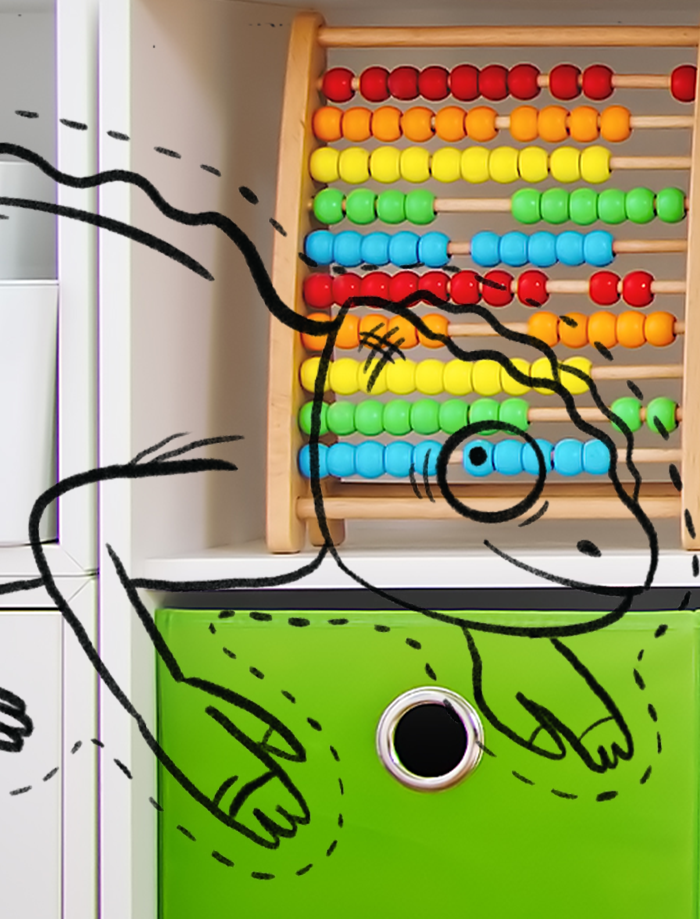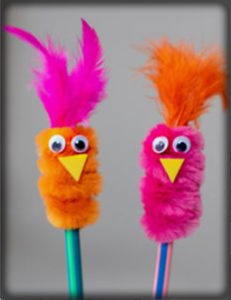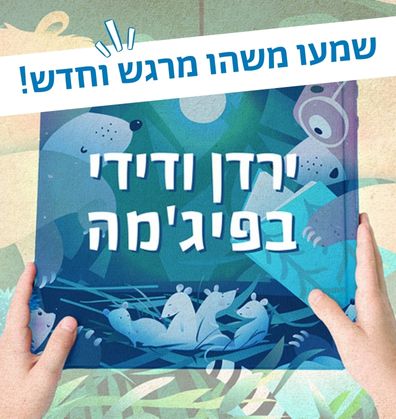טֶבַע וּסְבִיבָה
סְּפָרִים
Book-Related Family Activities

Family reading advice
Simple rhyming stories can convey a value-based, meaningful message too. We recommend using the story as a basis for discussion, allowing for opinions to be expressed and questions asked, such as “How would you have felt if you had been in a similar situation?”

“… And happiness shall be yours!”
Grandpa is happy to return home with his stars, calling them his treasure, and valuing them more than money. Following this story, you can discuss with your child and ask: “What makes you happy that money cannot buy?” Drawing? Bedtime stories? Perhaps a good-morning hug? Parents can also share – what is their treasures?
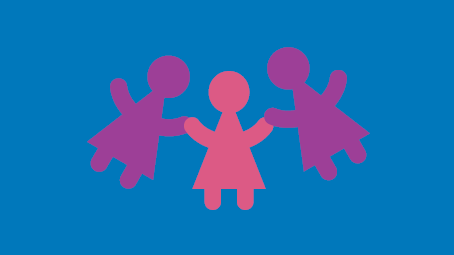
Our tree
If you were to have your very own imaginary tree – what would it grow? Hearts? Balloons? Perhaps stars too? You can draw and cut out the shape you have imagined, decorate it, and even write wishes or shared memories on it. The finished product can then be hung on a plant, branch, or tree near you.

Starwatching
We may not find a real star tree, but we can always take an evening stroll and enjoy the sight of the stars twinkling in the sky. You can take this book along with you and read it together by starlight.

QR code
Poet Leyb Morgentoy, 1905–1979, was born in Pinsk, Poland. He wrote this poem in Yiddish in 1938. Yoram Taharlev translated it, Nurit Hirsh composed music to it, and, in 1969, Chava Alberstein performed and recorded it.
Scan the QR code to listen to the song:

Childhood memories
The grandfather’s friends tell his grandchild about the boy his grandfather once was. Take a moment to share with your child too about the childr you once were, what you liked to do, what you miss, and share childhood photographs. You can also ask your child: What would you tell about yourselves when you were younger? What memories are particularly joyful or moving?
A song from the land of childhood
This book can inspire you to introduce your child to songs that remind you of your childhood or the place where you grew up. You can listen to old songs together and ask: Do you also have songs that remind you of things?

“Buenos Dias”
When the grandfather and father in this book speak to one another in Ladino, the child feels as if they are sailing away together to a faraway land. It is very exciting to understand, know, and utter words in a foreign language. Throughout the book, words and phrases appear in Ladino; you can go back and look for them in the book, then try to pronounce them together, and look .up their meaning

QR code
Scan the QR code and listen to the book Trees Waiting for Rain on the Sifriyat Pijama podcast. We recommend following along with the book while listening.
Tip for Family Reading
Books featuring characters who are imperfect and make mistakes generate empathy, and enable a discussion on subjects that are not easy to directly address. Use this book to spark a discussion and ask questions about the characters’ actions and feelings to encourage your children to express their own inner thoughts and feelings.
Asking for Forgiveness
You may want to ask your children: “What did you think about what Chico said to Pilchas?” “Which situations may lead to a hurtful exchange?”. You can also discuss similar situations they had to deal with, and ask: “Have you ever said something you later regretted?”, “Did you say you were sorry?” “How did you feel afterwards?”
Watch & Learn!
What is the speed of sound that the rabbit was trying to achieve? This Davidson Institute of Science video will teach you all about it using a fun experiment with a sound pipe.

There are many ways to say I’m sorry
You can help Chico ask for Pilchas’ forgiveness in various ways – a letter, drawing, poem, or dance. “Helping” Chico will enable children to develop their own forgiveness-asking skills, and help fix situations even when they seem too hard.

Becoming Marksmen
You can be inspired by this book to have your own marksmanship competition. You can make a bow and arrow using sticks and elastic bands, or take turns shooting balls into a bucket. Don’t forget to decide which of the forest animals you are!

Family Reading Advice
A recurring phrase in a book helps children follow the story, and feel active while reading, enhancing the shared experience. You can read this phrase in a special voice, add hand gestures, or change the reading pace. That way, every time you reach it, your children will happily join in.

More and More
The tendency to want more and more is very familiar in kids’ lives – you can discuss with your children and ask: Why did Lady Bezalel drop everything she was holding? Do you think she needed everything she bought? In your opinion, how did she feel when she dropped them? Has anything similar ever happened to you? What would you advise Lady Bezalel to do?

The Grocery List
After having read this book several times, you can have some fun and check – who can remember all the items Lady Bezalel bought and in what order?

Be Careful not to Drop Them!
How many toys and items can you hold without dropping them? This book can inspire you to go around the house, picking up stuffed animals, (non-breakable) toys, cushions and other soft items, and then decide on a “path” from point A to point B. Now take turns holding as many of these items as you can. Walking along the track while carrying them all – did you drop anything? Now you can go back to the beginning.

That is so Good!
What makes you feel good? At the end of the day, before bedtime, you can play a game during which each of you tells the others about something good that happened to you today, or about something that makes you feel good.

Family reading advice
Children enjoy looking at illustrations and noticing details that do not necessarily appear in the story itself. While reading, you should join them, look at the book together, and discover how the illustrations add fun and amusement to the written text and shared reading experience.

Enjoying the sunset
The characters in this book are friends who enjoy watching the sunset on the beach together. You can also go to the beach, park or even the street to enjoy the beauty of the sky as the sun disappears. You should also take some paper and crayons along to draw a sunset of your own, or any other beautiful thing that can be admired simply by taking a look around you.
Tip for Family Reading
Sometimes toddlers decline the offer to have a book read to them for various reasons. How can we get them to take an interest in books? We can trigger their curiosity if we leaf through a book ourselves, and remark on details that catch our eye or amuse us. Books should be placed openly and within reach, and you should find the right time for reading, when you and your children are free to comfortably sit together.
For more ideas, look up “How to get children interested in books” on the Sifriyat Pijama website.

When we don’t get what we want
In your opinion, how did the boy feel when he received a cat instead of a dog? Have you ever really wanted something, but received something else instead? What can we do when we do not receive exactly what we wanted?

QR code
Would you like to meet another mischievous cat? Scan the code and listen to the song Hayo Haya Hatul Shovav [There Once Was a Mischievous Cat]

Observing Animals
In this book, the boy discovers the cat’s special qualities: It hops onto your lap, licks you, its fur stands on end, and it purrs. You can observe animals in your vicinity together, and try to identify the unique qualities of each – how does it move? Which sounds does it make? And how does it respond to humans?

Miming and Guessing
The boy received a surprise cat – what other surprising animals can we “bring” home? How does an alligator sit on the couch? How does a snake slither across the carpet? You can play the following game: Take turns miming an animal and have the other players guess which one you are.
Family reading advice
Reading independently:
While reading, toddlers can participate and feel all grown-up and independent. They can choose the book, hold it and turn the pages, point and say words they know. Encouraging toddlers to participate in reading will bolster their sense of capability, and enhance their connection to the world of reading.

Doing things on my own:
You can discuss the things that toddlers learn to do by themselves, and ask: What do you do at home all by yourself? What do you need help doing? Are there things you would like to learn to do on your own? How can we practice something new that you would like to learn how to do?
Characters for Print
Print out the characters from this book, cut them out, stick them onto popsicle sticks, and act the story out yourselves, or make up what happened on the eighth day in the book using these characters.
Download Here! 🐞⚫🔴

Illustrations
The illustrations contained in this book are full of details. You can look for a new detail every time you read it, just like Tim Tam finds a new dot each day. Where is Tim Tam? Where are the black dots? What other shapes can you notice? Which animals appear on each page? Which items can be found at Tim Tam’s house?

Looking for dots
Tim Tam learns to notice the dots around he and find them. You can look for dots and round objects together in your surroundings. Where are the dots hiding? Perhaps on your shirt? Your body? Which round items do we have at home? You may even encounter one of Tim Tam’s ladybug friends.

A ladybug finger:
Use two fingers to lightly tap your child’s arm, leg, or face, and travel along it like a ladybug. Where does it feel nice? Where does it tickle? Where can you feel it more, and where can you feel it less?

Family reading advice – Recurring phrases
Many books written for toddlers have a recurring phrase that helps their target audience follow the story and join in the reading. The recurring phrase can be emphasized while reading using a special voice, body movement, or a change of reading pace. For example, when you read bo itanu (“come with us”), you can add an inviting hand gesture, or make the end of the phrase longer – veyesh etzlenu m-a-k-o-m (“and we have r-o-o-m”).

Hosting friends
The girl in this book invites the children to join her under her umbrella and “hosts” them. You can ask the children whether they like to host at home, and who they would like to host.
Sometimes toddlers find it hard to share their games when they host others at their homes. You can discuss that and explain that, just as the umbrella in the book is still the girl’s umbrella, even when she allows others to take cover under it, so do their personal belongings remain theirs when sharing.

Listen to the Song
You can listen to the song as sung on Kan Kids’ children’s show Parpar Nechmad, and join in the singing as well as the dance movements.
Lyrics and music: Datia Ben Dor
Performing Artists: Ester Rada, Uri Banai, Meital Raz, Ami Weinberg.

A family with an umbrella
How many family members can fit under a single umbrella? And how many can fit under a blanket? Or the dining-room table? This book can inspire you to find out how well you can all squeeze into various places in amusing and fun ways.

A walk in the rain
On a rainy day, you can pull on some boots, put on a coat, take an umbrella and go out for a walk in the rain! You can step into puddles and observe the special things that change around us when it’s raining – How many people are outside now? What do the skies look like? What happens when the rain falls on soil or the sidewalk? What kind of smell is in the air?

Who am I?
“You mimic animals so much that you don’t know how to mimic yourself”, says Shumdi to Arik the lion. You can discuss the things that make each of you special: your voice, body movements, hobbies, favorite food – and what else?

Mimic & guess
Much like Shumdi and Arik, you can also take turns making animal sounds, and having your family guess which animal you were trying to mimic. You can also add the sounds made by objects, and try to mimic the sounds of rain, wind, or any mode of transportation. You can record the sounds you make too, listen to them one at a time, and try to guess which of your family members made it.
Favorite stories
Anat especially likes the stories told by Shumdi the rabbit. Which stories are your personal favorites? You can look for and recall stories that the kids liked when they were infants, as well as well-loved stories that you have not read in a while, put them all together, and read one of your favorite stories whenever you feel like it.

Family reading advice
Toddlers enjoy reading books together, and when they focus on the story, they use their learning, concentration and imagination abilities. To “get into” the story and allow them to concentrate, you should disconnect from the world for a few minutes, sit somewhere calm, with no background noises, screens or mobile phones, and fly together on the story’s wings.

פעם אני החתול ופעם אני החתולה
This short book is full of experiences from toddlers’ day-to-day lives: They want to take part, sometimes they experience rejection, they strive to be independent and are busy finding solutions. You can discuss such moments in the story with your toddlers and link them to their world: What did the girl cat want? How did she feel when the boy cat didn’t want her to join him? What did she decide to do? Do you also enjoy going out for a walk? And what do you like doing all by yourself?
Let’s go for a walk!
You can suggest packing a small bag and going for a walk with your toddler, just like the girl cat, in your home or neighborhood. Together, you can think of all the things you need to take with you on your walk – a bottle of water? A hat? How about a toy?

What do the illustrations tell us?
When you look at the illustrations together, you could focus your attention on different things each time – Where is the boy cat? And where is the girl cat? What are they doing? Which items can you identify in the picture?
Close to home, dear to our heart
What is your favorite place? Is it at home? Is it nearby? Or is it far away from home? You can share with one another: What is your special place, what do you like about it, and what is special about it.

The grace of a place
You can find good things everywhere; every place has some beauty. Take turns choosing a place, whether near or far, in Israel or elsewhere, real or imaginary, and have the other participants ask questions about it to discover what makes it so wonderful.
A good station
How can a bus station make people happy? Scan the QR code and watch the schoolchildren’s heartwarming initiative in Jerusalem.

In our environment
What is happening near your home? Go on a short walk outside, and try to discover how you can do good in your own surroundings: How about picking up litter and placing it in the recycling bin? Or offering people waiting at the bus station a drink of water? Or setting up a library on your street with your neighbors?

Family reading advice
Illustrations allow young readers to be exposed to art, and get to know new worlds that enhance the written story. At times illustrations tell another or different story than the one told in words. While reading this book, we recommend looking at the illustrations together, take a break in the reading, take another look at the illustrations, and allow the children to find special details that speak to them.

Caring and trying
Bear is trying to help his plant. He wants to take care of it. You can discuss and share – who is it that you care about? And who do you take care of? A pet? A toy? A beloved plant or perhaps a younger sibling? – How do you care for them? Have you ever tried to care for someone or something that didn’t work as planned, but things worked out in a way that you did not expect?

What illustrations tell us
What is happening to the bunnies? The amusing illustrations in this book describe an entire underground world. Together, you can look at the illustrations and tell one another what the bunnies are doing. When are they happy, sad, full or busy?

What can we see from here? And from there?
What can we see when we are sitting on the couch? And when we are standing in the center of the room? Or crawling under the table? Take turns as each family member picks a location from which to look at the room: What has caught their attention? Do they see details that others don’t see?

QR code – What can we do with a carrot?
Would you like to prepare a carrot for planting and eating? Scan the QR code to discover what can become of a small piece of carrot.

Reading advice: Befriending a book
Reading books from a young age contributes greatly to toddlers’ development. Starting to read slowly and gradually is recommended. At first, toddlers may be allowed to connect to the book in their own way: Touch it, open and close it, look at the illustrations, and become curious. Later, you can read: Read a little each day, patiently and calmly. Some toddlers will prefer to be read a single page, get familiar with it until – hey – books have become their friends!
What happens along the way
We can make interesting discoveries if we only pay a little attention. You may enjoy discussing what you see as you walk or take a drive: “Here is a red car!” “I see clouds. What do you see?” You can also share experiences with your toddler: “On my way to work today, I saw a lady walking her dog. What did you see on your way or back from daycare?”
Why read with toddlers?
Scan the QR code to discover how books’ contribute to toddlers’ development.

Morning ritual
Like the boy in the book, all toddlers enjoy rituals that generate a fixed routine, calm them down, and help them start their day feeling good and happy. You can also have your own morning ritual. For example, you can encourage your toddler to say good-bye a beloved stuffed toy: “Teddy, Teddy, I’m going to Kindergarten, goodbye!”, while you parents reply on behalf of the bear: “Goodbye! See you later! Have a safe journey!”

Encountering animals
Many animals appear in the book. You can look at them together, and state their names, make the relevant sounds, and mimic their movements: Crow like a rooster, hop like a bunny, or gallop and neigh like a horse. You can also look at the illustrations on the final page, cover one of the animals each time, make the relevant sound or mimic its movements, and have your toddler guess which animal it is.
A tip for family reading
When reading a songbook, you can focus on one song at a time, read it several times, or sing it, if it has a tune. Try looking at the drawings together, and note where the toddler’s attention is drawn. Every so often, you can add another song from the book and see what reactions it evokes, and whether it’s fun and intriguing.
Other animals and us
You will encounter various animals in the book. The toddlers will know some of them. Others will be new and exhilarating. Whenever you encounter animals nearby, you can draw the toddler’s attention to what’s special about the animal – “the bird has a beak”, “the ants march in a line”, or “the snail carries its house on its back”.
Singing with your whole body
You can use gestures as you sing. For example, when you sing “Come, Little Butterfly”, you can invite the butterfly with a beckoning gesture, flap your hands, and tap on the toddler’s hand. Which gesture would you use for a monkey cracking up? Or a bear climbing a ladder?
A piece of advice when reading as a family
Toddlers “read the illustrations”. Looking at illustrations teaches toddlers to pay attention to detail, while exposing them to art. You could occasionally ask questions related to the illustration, such as: Where’s the fly? What is the chameleon doing?
Color-reading
While reading, you may want to draw your toddlers’ attention to the main color that appears in the text and illustration. Even if your toddlers do not know the name of these colors yet, they would be delighted to look at the colorful illustrations.
Arts & crafts – A color-shifting chameleon
Would you like to have a chameleon that changes its color? Please scan the QR code, print the drawing of the chameleon out on a transparency, and see how it can become colorful, spotted, or even checkered.
Items by colors
Do you have a red ball? What else is red at your house? You may enjoy saying the name of a color, and looking for items of this color together around the house: A cucumber, houseplant, and what other green item can you find?
Playing a game of ‘Who am I like?’
“I crawl on all fours and change colors like a… chameleon!” take turns deciding on an animal which the parents act out and the toddlers follow suit: “We’re lions, let’s roar!”, “We’re puppies, let’s bark and wag our tails!”
A discussion on being together and apart
Gali and Gaya love doing stuff together, but also separately. You may want to discuss and discover what your toddlers like to do together with a sibling, friend or you, their parents, and what they prefer doing on their own.
Gali and Gaya come visit
Would you like to play with Gali and Gaya, and dramatize the story? Please scan the QR code, print out two adorable ducks, cut them out, and act the story out with them…!
Follow me! A motion game
Like Gali and Gaya, you too could walk together. How about making a trail at home, and marking it with a piece of rope or various items. Next, walk along it in single file, one behind the other, or perhaps together, side by side. You can also take turns being in the lead and exclaiming: “Follow me!”
Animals & illustrations
A sheep, frog or butterfly? You may enjoy looking at the illustrations in this book together, and discovering the various animals. You could make the sound that each oft them makes, or move like them: Flying like a butterfly, buzzing like a bee, or… What else?
A piece of advice when reading to toddlers
We recommend reading the book alone first, before reading it as a family. Prior familiarity with the book helps to read it seamlessly later, at a pace suitable for toddlers. Enjoy reading this book!
A discussion on who can help
We can all help others, even toddlers. You may want to ask your toddlers how they can help others, or tell them that they are helping when it happens: “Remember when you helped me set the table?” “Look at you helping me put away the toys!”
Listening to the story
Would you like to listen to the book Noni and his Mom Walk Homefrom Kindergarten? Please scan the QR code to find a recording of this book. You could listen to it while traveling, playing, or sitting together while turning the pages of the book.
A story in illustrations
The illustrations are part of the story, and using them, toddlers identify and recognize the plot and some of its details. You may enjoy looking at the illustrations together, and searching for the items that Nomi gives his mother: ‘Where do you see an illustration of a bag?’ and ‘Where can you find an illustration of a coat?’
Playing a game of ‘An items tower’
Inspired by the items piling on top of mom in this book, you may want to take turns building a tower out of various items: Very carefully, one on top of the other, you can place building blocks, toys, hats, bags, and anything else you might want to add.
This is How We Plant a Seedling
You can also plant at home or in the garden: Dig a hole in the ground, place the seedling inside, tighten the soil around it, and water it. Not sure how to plant? Follow the instructions in the book…
Movement – How does a seedling grow?
It is a good idea to demonstrate with body movements how a seedling grows: bend low, straighten up slowly, stand on your tiptoes and finally, raise your arms up and sideways.
Game: Quickly-Slowly
“How do you plant a seedling? Neither fast nor slow.” You can have fun with quickly or slowly: “Now we will walk… quickly. And now… slowly!” “Let’s roll our hands… slowly, and let’s roll our hands… quickly!” What else can you do quickly and slowly?
Song – “This is how we plant a seedling”
“This is how we plant a seedling” is a song with a melody composed by Mati Caspi. You can sing it together with movements, dance and clapping of hands.
Scan the QR code to upload the song and sing together.
A discussion on reeds and cedars
You may enjoy discussing flexibility and stability in life. You may want to share examples from everyday life. Situations in which we behave like cedars, rooted in our positions, or situations in which we are agile, changing our behavior or opinion. What happens when we realize that our desires cannot be met as we expected them to be?
An exercise in physical flexibility
You may enjoy sitting opposite one another, inhaling and lifting your arms up at your sides until they are straight up. Next, exhale while lowering your arms until they reach out in front of you. We recommend doing some short exercises each time and gradually add more. Enjoy!
A game of reed-cedar
What’s the opposite of reed? Cedar! And what’s the opposite of hot? Cold! And the opposite of old? Young! What’s the oppostive of…flexible? stable? sour? baby? Take turns saying a word and having the other players come up with its antonym. By the way, what’s the opposite of… opposite?
A discussion on things that are wonderful and free
What gives you pleasure for free? – You may want to take a look at the illustration in which the wise man presents all the good things in our world that are given to us for free, and share your opinion of them with one another – Do you also enjoy them? And which other things that are given for free do you like?
Listening to a story
The story of the baker, peddler, and wise man is yours to listen to by scanning the code.
Illustrations – A girl and boy
A girl and boy appear in many of the illustrations in this book. You may enjoy looking for them as you leaf through it, and thinking of reasons why the illustrator chose to add them to the illustrations together.
Challah and a pleasant smell
Would you like to make challah? A recipe is waiting for you on the final pages of this book. Bon Appetit and enjoy the wonderful aroma that will fill your home.
A discussion on choosing and investing
You may want to discuss Cyril and Tevye’s choice: Why do you think they chose not to use all the gold? Did that surprise you? Why, in your opinion, did they decide to invest the gold in schooling?
Illustrations – Where is the goat?
The goat is by Cyril and Tevye’s side throughout the book. You may enjoy looking for the goat in the illustrations: What is it doing? What is its connection to the family? How about trying to tell the story from the goat’s point of view? What happens to it as the book progresses?
A game of treasure hunt
Gather several small gifts that you would like to give your family: A drawing, greeting card, or item. Take turns hiding your gifts and having the rest of your family look for the treasure using clues: “Near and far”, “hot and cold”, or arrows placed around the house.
Listening to a story
האזינו לפס הקול של הספר!
If you scan the QR code, you will be able to hear the soundtrack of the story. You can listen to it together at home, while traveling, or anytime and anywhere you choose.
A little advice for family reading
To make family reading enjoyable, and encourage children to read, we should choose books to which children relate and explore topics in which they are interested. Some prefer a piece of fiction, while others would want to read a story that “once was”. Whatever their favorite book may be, it would encourage them to enjoy books, while helping them to develop their imagination and creativity.
A discussion on belongings and memories
You too could look for items that remind you of past experiences: A family photo, gift you have received, or item associated with an experience you have had. Take turns introducing the object of your choice and sharing a memory relating to it.
Listening to the story
What does Grandpa sound like? Does the machine make sounds? By scanning the QR code you too can listen to the story together or separately.
Building something
Are you interested in making a machine of your own? You can gather some boxes, fabrics, crates and old toys to build your very own machine. You can plan what it would do and look like together, or simply build it and discover its attributes as you go along.
Illustrations – Where are the machines?
Many of the illustrations in this book depict machines. Perhaps you would enjoy leafing through them and finding illustrations of machines and machine parts – Can you tell what each of them does? Perhaps you could be inspired by the part you found to invent a new machine, and imagine what it is capable of doing.
Pinterest
Arts & crafts, songs and other activities are available on the Sifriyat Pijama Pinterest page
A discussion full of delight
Having read this book, you may enjoy a discussion about why, you think, Uncle Simha (Hebrew for joy) is named so. What about the things he does or says that make you smile?
Listening to My Uncle Simha
Would you like to hear a story? Go ahead and scan the QR code to listen to the book My Uncle Simha. You may enjoy listening to it together while turning the pages whenever you like.
Happy songs
Which songs make you happy? Perhaps you could make a playlist of all the songs that make your family happy, and sing along together. You could even sing in funny voices – a high-pitched voice, the deepest of basses, or a whisper – adding some dance moves for greater delight.
A confused game for a confused uncle
Take turns asking a question while the other players try to come up with a “confused” response. For example: What’s your favorite drink? Tea with a touch of mustard! What do you do when it rains? Wear sunscreen! What sound do birds make? Where should we go on our next trip?
Pinterest
Find more inspiration and creative activity in our Pinterest page.
Family reading advice
Reading a book together can evoke thoughts, feelings and emotions in children: Like the young bird, they can feel small and fragile; like Efrat, they can feel misunderstood, or determined to go on doing what they believe is right. We recommend sitting close together, and accompanying the reading with a soothing stroke: Touch brings parents and children closer together, and strengthens children’s faith that they have someone who supports them, and is attentive to the feelings that the book evokes in them.

Getting bigger
Little Peanut is getting bigger, and Efrat, who is discovering independence and responsibility, is getting bigger too. You can discuss and ask your children what makes them bigger and more responsible than they were before – are they taking care of a pet, for example? Doing things on their own? Helping their friends and around the house? We recommend always reminding children about the areas in which you, as parents, see that they have made progress and grown. Doing so makes children feel good, and bolsters their self-confidence.

Helping animals
You can also help the animals in your surroundings: You can make a feeding station for birds containing crumbs; place a water bowl for cats; make a sign protecting an anthill, or think of your own ways of helping the animals in your surroundings.

Where are the animals?
The illustrations in this book depict various animals – some are stuffed, drawn or playthings, some are real, while others appear in the children’s thoughts. Can you find them?

Jumping, skipping, flying
Do you like to move? Look at the page on which Little Peanut learns how to fly, and try to move along with the story: You can grow wings, hop, skip, or even try to pretend to fly.
A game of “Find me!”
The main characters in this book are a hedgehog, rabbit and mouse. But other animals also appear in the illustrations –
Can you find them?
How many animals have you found?
“Did you find me in the illustrations?”
Reading Together
You can encourage the toddlers to actively join in reading the story. They can complete rhyming words, accompany the conversation between the animals with facial expressions and proper hand gestures, and make the sounds of the animals appearing in the story.
Towards welcoming Shabbat
You can ask the toddlers: What do you like to do on Shabbat? If the family has special preparations for Shabbat, it is worthwhile to tell and share them with the toddler
Where Are The Animals?
The book features a bee, a turtle, an ant, a chicken, a cow and a rabbit. Ask the toddlers to identify the various animals in the illustrations in the book and accompany each animal with its unique voice or add other characteristic detail: the bee hums, the rabbit bounces, the turtle crawls slowly, and the cow is mooing.
And Now - A Turtle!
How to make a turtle with the palm of your hand? Close the palm to a fist and hide the thumb inside. Call the turtle out, take out the thumb and wave it hello. You can create a bunch of turtles with all the palms present at home You can also be a turtle yourself and walk slowly on all fours. Are you tired? Get inside to rest in your “home”.
Songs for all Times
This book is a gift that can accompany you as a family throughout the year: on festive holidays and in changing seasons, with the arrival of Autumn and in preparation for a birthday celebration. Choose the appropriate song for each coming occasion or holiday, read it together, look at the illustrations, sing and celebrate. Poems and illustrations Read the songs together and look at the illustrations. Which illustrations attract the children’s attention?
Songs and Illustrations
Read the songs together and study the illustrations. Which illustrations draw the children’s attention?
You can look together at what you see in the illustration and what details appear in it.
Words and Melodies
Many of the songs in this book were composed to music. You can take a cymbals, wooden spoons or lids of pots and pans, and accompany the singing by playing music and dancing. Once the children are familiar with the song, you can play a guessing game: starting humming the tune, and invite the children to guess the rest and join you.
What’s Hiding in the illustration?
Open the book randomly, or at a favorite song, and let each person in turn name an item that everyone else must look for in the illustration: Find in the illustration: Where is the house with a red roof? Where is the pomegranate? Where are the clowns?
Discussion
Which perfect gift would you like to get for your birthday? How would you feel if you did not get it? Have you ever wanted something very badly but did not receive it? This book prompts us to discuss our expectations – why this specific gift? Do we really need it or are we simply jealous because we saw someone else has it? You may also want to discuss disappointments, and the things that help us cope with them.
Perfect gifts
How well do you know members of your own family, and what do you think would be the perfect gift for them – would it be something you buy or an experiential gift, such as time spent together, or perhaps a trip somewhere? How about playing a game and finding out? In each round, all participants try to guess what one participant would really like to get as a gift. Those whose guesses are the closest win… the perfect family hug.
A human car game
Whoever said only cars drive round and round with a cord attached? People could too! Two of you could hold the two ends of a long cord, leading one another left, right, backwards and forwards. If you get tired, make a pit stop, and start again.
Time together
“A car with Dad is the perfect gift”. And what would you consider to be the perfect gift? What would you like to do with your father or other family members? You could fix broken items, build or assemble something, or perhaps draw, bake, plant, or dance together. In fact, you can do whatever you want, as long as you get to spend time together.
Discussion
Unpleasant things happen to all of us – but do they only ever happen to us? You may want to discuss the feelings that emerge when something unpleasant happens, and help each other think of people who can help, as well as how to cheer each other and ourselves up.
Illustrations tell a story
The illustrations in this book tell us what happened to Winston’s friends without using words. Only Winston doesn’t notice. Pick one illustration, look closely at Winston’s friend, and tell their story as if you were them: What are they feeling? What are they thinking? What about this particular illustration caught your attention?
Lucky it happened to me!
You may want to try looking on the bright side! At the end of each day, share something good that’s happened to you with your family – make sure that both parents and children share news about their day.
Who amuses me? And who surprises me?
Look at the illustrations together and search for details that amuse you – what did each of you find amusing? Did any of the details surprise you?
Discussion – What does it mean to be considerate?
“It’s important to be considerate toward our environment” – What does being considerate mean? How can we be more considerate of one another at home, within our own family? And how can we care for our environment? You could discuss these questions with your child, and come up with suggestions on how to be more considerate of other people as well as the environment.
An invitation for an observation
You’re most invited to embark on an observation on a piece of nature in your immediate surroundings: A park near your home, or field, or yard, or even a planter on your balcony. What would you discover if you sat down quietly and watched? You may want to bring a magnifying glass along with you.
Learning from one another
What can adults learn from children? Lots of things! How to play their favorite game, engage in arts & crafts, find out more about a subject they learned about in preschool, or just share an interesting thought. And what can children learn from adults? To find out what we can learn from one another, all we have to do is sit together, and pay attention.
Catching colors
The sky is blue, the earth is brown, and vegetation is green. You may enjoy going outdoors and “catching colors”: Take turns to say a color, while the other players quickly find an item around them that is the same color, and point to it.
Discussion
How many rooms does your house have? And what do you do in each one? You may want to look around and think: What do we really need, and what could we forego? You could discuss your own home, or imaginary ones. You parents could tell your children about the house in which you lived when you were their age: What are the differences and similarities between your childhood home and the current one?
Building houses
You can be builders too! You can build a house of Legos, cardboard boxes, pillows, or any other material. How about decorating the structure you’ve built, and asking your parents to help you write the name of the street it’s on. And who would you want to invite over to the house you’ve built?
An illustrated story
You may enjoy looking at the illustrations and discovering the other houses that appear in them: Who is building a house? And who is carrying one on their back?
One room
Look at the final illustration at the end of the book, where the main character is living in a single room: Which items does it contain? Would you have removed any of them, and brought in others in their stead? Which items found in your home would you have added to the room depicted in the illustration? You could take turns and have each family member pick an item in the illustration and decide whether or not they would leave it in the illustrated room, and if not, which item from your own home they would have placed there instead.
Discussion
Do you, much like the pine tree, feel lonely sometimes? Have you ever seen a boy or girl who seemed a little lonely? You may want to discuss this feeling of “being all alone” and what we could do when we – or those around us – feel this way.
Some information on pine trees
The Jerusalem Pine (more commonly known in English as the Aleppo Pine) is the species of pine trees that grows in Israel. It is highly prevalent in the Carmel and Judea Mountains areas. As the Jewish community, the Yishuv, grew, it began to plant large pine tree forests in the Land of Israel. The pine tree contains resin, and in springtime, its branches are densely filled with pinecones. Would you like to learn more about the pine tree? Feel free to look for images and additional information online.
The next chapter
What will happen once the trees grow and a forest is created? Will they be friends with the pine tree? Will other friends come and visit? And what will the children do in the new forest? – You may enjoy discussing the next chapter of the book, acting it out, or drawing it together.
A game – Who am I?
Am I the wind blowing? Or the falling rain? Perhaps a leaping rabbit? You could play a form of charades by taking turns miming one of the characters in the book, and having the others try to guess which one you’ve chosen.
How to adopt a tree
How about picking a tree in your area and taking care of it? You could clean around it, place a mat under it, and observe the small animals that use it as part of their habitat. If you look carefully, you may even catch it smiling.
Dvora Omer
Authoress Dvora Omer (1932–2013) wrote dozens of books and stories for infants, children, and young adults. She began writing as a child, and continued as she grew older: “When I became a teacher, I began to write for children, and have published many books since then”. Omer wrote historical books for children that centered on prominent figures in the old Yishuv, as well as adventure stories, imaginative tales, folktales, jokes, and books about the challenges faced by both children and adolescents. Dvora Omer won many literature and children’s literature awards, and in 2006 was awarded the Israel Prize for her contribution to Israeli culture.
Discussion
During Chanukah, parents and children, families and friends, at home and in kindergarten, celebrate the Festival of Lights together. After candle lighting, you can talk about the way you celebrated Chanukah when you, parents, were younger, adding and sharing stories you heard told in your family, singing an old family song, or preparing your favorite food.
Mystery box
Would you like to have your very own mystery box? How about taking a cardboard box, decorating it, and hiding your favorite items in it? Let’s see who can guess which items you hid in it. And what did the rest of your family hide there?
Playing hide & seek
Following this story, you could play hide and seek, and search for one another. You could even hide a dreidel in various places around the house, using clues, arrows or other signs to help others discover its hiding-place.
We are all dreidels
With the candles lit beside us, and the smell of doughnuts in the air, you could pretend to be dreidels yourselves. You could be a “turtle dreidel” and spin slowly, an “airplane dreidel” – spinning and spreading your arms wide, or a “bear dreidel” that trudges heavily. And what else?
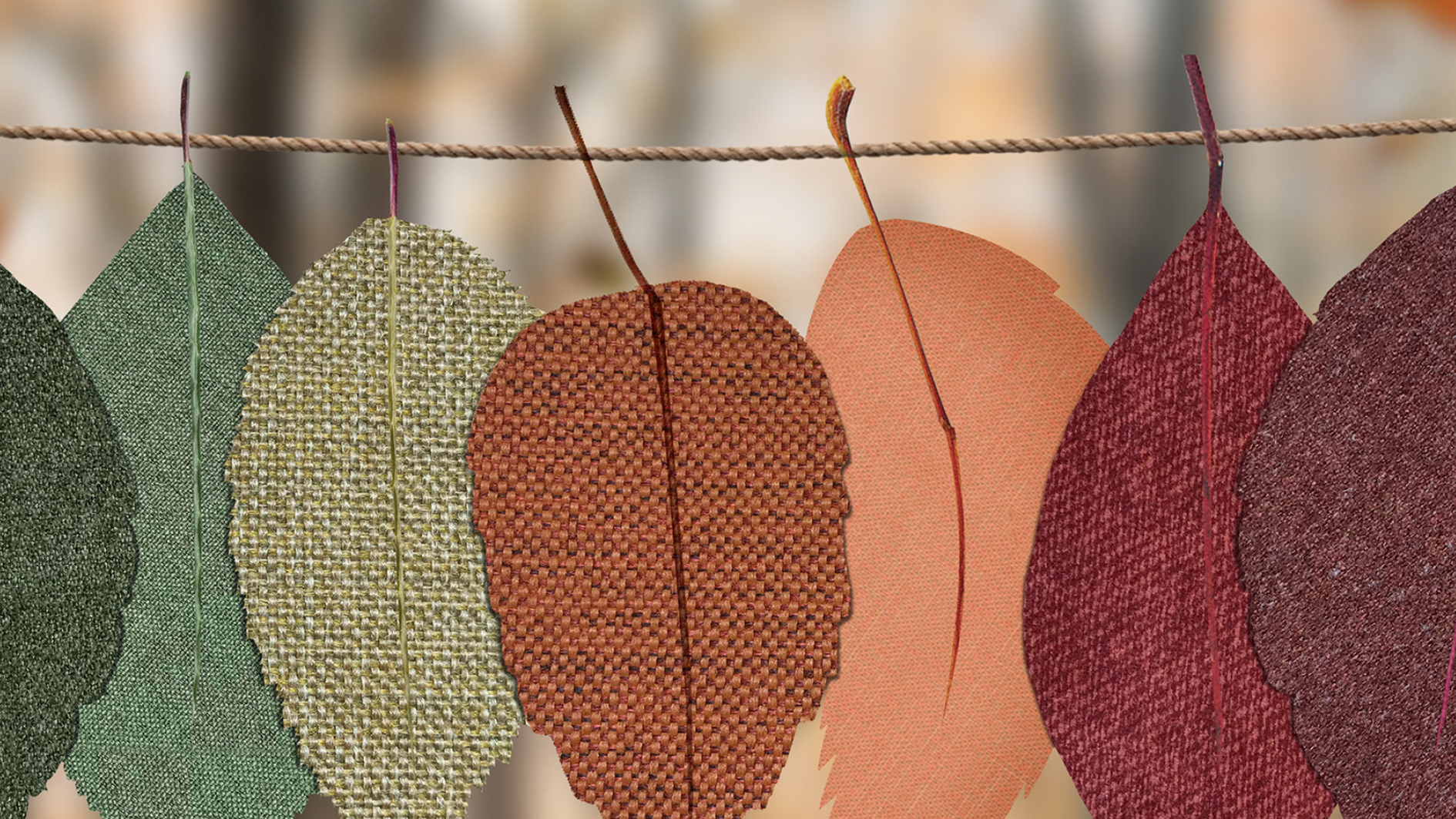
Discussion
One could collect leaves, seashells, stones, napkins, marbles, dolls, or even… words. Do you, parents, also have similar collections, or had them when you were younger? You are more than welcome to tell your child about them, and invite them to take a look around them to see what else they could collect. You could start working on a brand new, joint collection right now!

My treasures
A tin box, kettle, crate or shoebox could each become a home for beloved items. You could decorate your container of choice with newspaper cuttings, buttons, leaves, seashells, colorful sand, or any other suitable material that you may find at home or outdoors. Are you done? Is your container ready? Now’s the time to fill it up with treasures.

Looking for similarities
One leaf looks like a feather, some stones look like eggs, and what shape is a pinecone? You may enjoy collecting leaves, stones, pinecones, or anything else you find around you, and… play: Take turns picking an item, and having the other players name objects to which it is similar.

What's new around you?
What’s new in your surroundings? Perhaps you could go outside and take a fresh look at the environment: Which animals will you come across? What colors and shapes are the leaves? What is happening up above in the sky, or down below on the ground? You may enjoy creating your own path, take a walk on it from time to time, and check what has remained the same, and what has changed.

Pinterest – Arts & crafts using leaves, treasures and collections are waiting for you on the Julia and the Leaves page on the PJLibrary Pinterest.ּ
The Wise Men of Chełm
Chełm is a city in Poland, and in Jewish folklore, it is the hometown of the wise men of Chełm, who are not actually all that smart: they are ridiculous and naïve, and their stupidity is often depicted with a smile and much compassion. The wise men of Chełm have become known for their silliness and pointless actions, and are the protagonists of many amusing tales. The term “wise men of Chełm” has come to mean those who act irrationally and absurdly. The stories about the wise men of Chełm can be found in collections and anthologies for both children and adults.
Reading & singing
The story about Joseph makes us smile and laugh. You could ask your child: What amused you about this story? What about the illustrations did you think was funny? What usually makes you laugh?
Inspired by Joyful Joseph, who began each morning with a song about his beautiful life, you too could write a song and tune, and sing it together.
Landmarks
What about your town do you like? You may enjoy taking photographs of places and people you love, or write a short poem about your hometown, using Joseph’s song as inspiration. You could even write a tune and turn your poem into a song.
How will we remember the way? You may want to step outside, look around you, and identify landmarks, such as a tree, bench, or the name of a street. You could draw a map of the route you’d walked, add your landmarks to it, and take it with you next time you set off on your way.
How beautiful is my town and how lovely is my room!
Joseph loves his town and looks kindly upon it. Try to follow Joseph’s footsteps and describe your room – what about it is beautiful and good? What do you love about it? And what do you like about your home? You could take a family tour, during which each of you will describe your favorite parts of the house.
A language of signs
An arrow pointing right, an arrow pointing left, one pointing forward, and another pointing backward – that’s all you need to create a particularly energetic game. You could draw these arrows on dice or directly on the floor, and ask your child to jump in the direction to which the arrow points. You could also throw number dice and jump up and down as many times as shown by the dice.
How about playing “treasure hunt”, and drawing arrows leading to the sought-after treasure?
Discussing
“But Robin doesn’t care, she likes sitting on her own like that”: Do you think Robin is really alone? What do you do when you’re on your own? Where do you like to spend your alone time? You may enjoy taking a stroll through the book, and discussing the experiences Robin undergoes when she’s in the tree’s company. Which of Robin’s experiences did you like best?
Illustrations, color, and creativity
This book is rich in color and details that change with each season. You may want to suggest that your child look through the pages, and search for various items: leaves, clouds, fruit, or animals. Perhaps your child can look for the main colors in each page – a red or green page – and draw pictures that are inspired by the book’s illustrations: a green drawing, a yellow one, or a rainbow-colored one.
A game called "What's my Secret?"
How good are you at guessing secrets? You may enjoy playing the following guessing game: Each player in turn picks a “secret” according to a pre-determined topic, such as animals, books, or something found in nature. The other participants must guess what the “secret” is by asking “yes or no” questions.
Environment – Adopting a tree
How about going outside and looking for a tree close to home? What does it look like? What color are its leaves? Perhaps the tree is bare, and has none? Is it bearing fruit? If so, careful! Not all fruit are edible. You could stroke the tree trunk, and notice the birds and other animals nearby. You may want to visit it from time to time to see whether and how it changes throughout the year. With Robin as your inspiration – can you think of a gift that you would want to give your adopted tree?

Discussing – Doing things on my own
“He who sowed sorrowfully, now reaps joyously” – the children in this book enjoy working hard and being independent. Do you, children and parents, enjoy working and creating yourselves? What kind of work do you enjoy doing together with friends or family members, such as your grandparents? And what do you enjoy doing all on your own?
You may want to think together about the kind of work that you find hard, but also rewarding.

Simple pleasures
There are simple, everyday pleasures like drinking lemonade together, smelling a fragrant flower, or listening to a story. You may enjoy making a family collection of pleasures together: draw moments of joy on notes, and post them up in a central area of your house. You could “pick” a note each day, plucking it off the wall, and taking a moment to share some simple joy together.

Playing a fragrant game
This book mentions many scents – lemons, herbs, and roses – that may inspire you to play the following aroma quiz: pick some fragrant items (soap, a vanilla bean, mint leaves, orange zest, etc.) and start playing. Take turns closing your eyes, smelling one of the items given to you, and trying to guess what it is. Can you guess by using your sense of smell alone? You could allow participants to use their sense of touch too. When the game is over, you could place the fragrant items in a small basket, and smell them in moments of simple pleasure.

Growing joyously
You may want to take a walk near your home to look for fruit trees, flowers, or herbs. You could try growing some herbs in your garden or a planter – mint, tree wormwood, sage, or lemongrass. This could be the perfect opportunity to give your child a job – being responsible for watering the plants – so that when the time comes, they will be able to pick them joyously, and use them with pleasure!
Reading together, experiencing together
This book allows toddlers to take an active part in its reading, for each page ends with an intriguing question, to be answered on the following page. You may enjoy allowing your toddler to turn the pages and find the answer.
Going outside
The Pear is Extra Sweet invites readers to go outside and discover the wonders of the world close to their homes: you could rest under a tree in your neighborhood, have a snack there, and play with fallen leaves. Perhaps you would enjoy taking this opportunity to introduce your toddler to magnifying glasses: look through the magnifying lens, and see what the world looks like close up.
What happens at nightfall?
Various items found in our immediate surroundings are shown on the final page of the book. You may want to examine what the back yard holds with your toddler, and where in the book each item is found. You could even use the final page to recall your day together, and sum it up with your toddler: where were you today? Who did you meet, and what did you do?
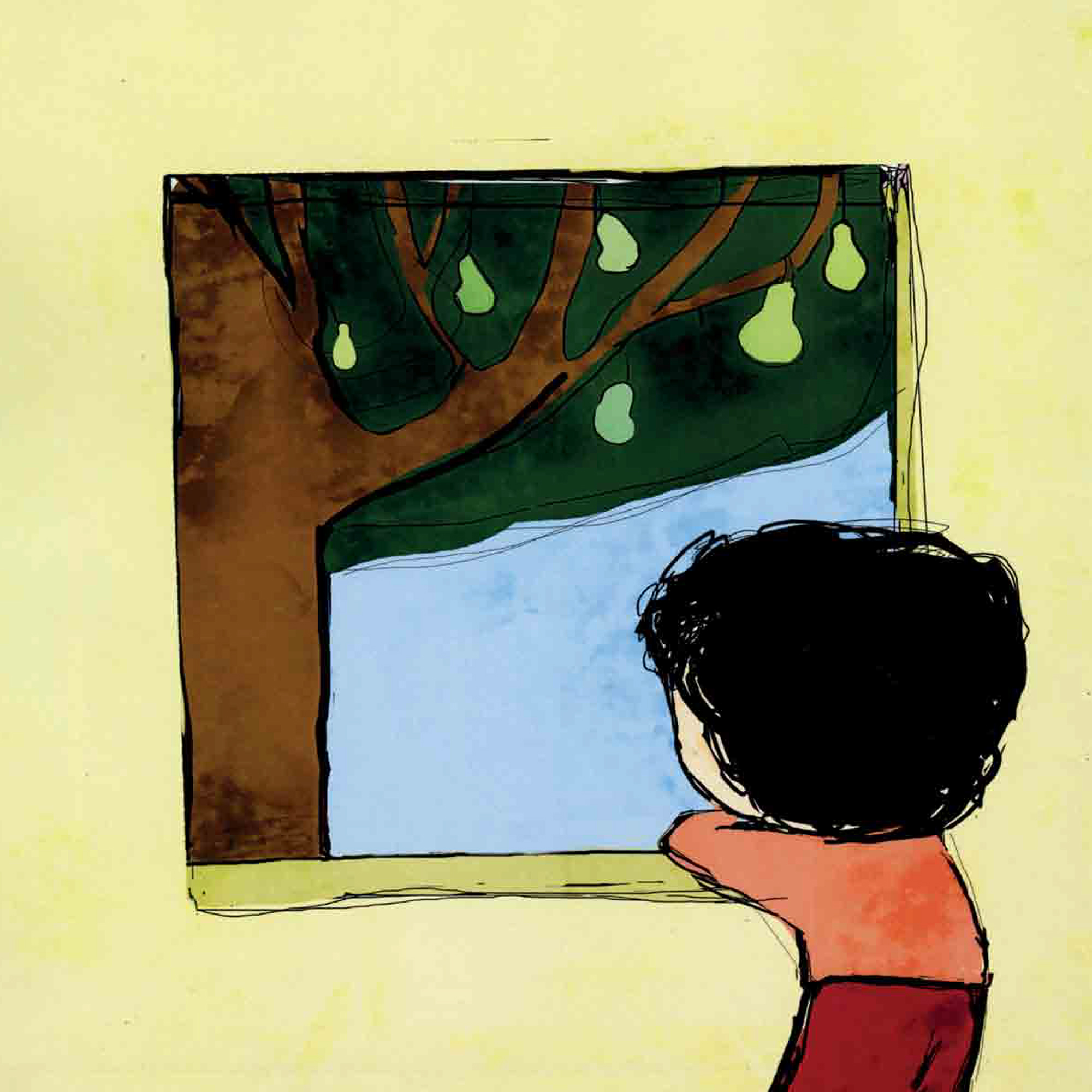
The puddle-boat game
Even if it isn’t raining, you could create a small puddle in the back yard or in a large bowl, sail paper boats on it, feel how wet the water is, and add fallen leaves and branches into it. Wondering how to make a paper boat? Log onto the book’s webpage or the PJLibrary Pinterest page for easy paper boat making suggestions.
What do you see out of your window?
You may enjoy looking out of your window together to see what moves and what remains static. Can you hear any sounds? Have you discovered anything surprising? Perhaps you would like to look out of your window during the day, and again in the evening, after nightfall. Did you discover different things by day and by night?
Discussing – What about our world?
What is your responsibility, as parents and children, for your friends, family, and environment? Which roles do you play within the family, and which additional roles would you like to assume responsibility for in order to help others and your surroundings? Perhaps you could discuss and make suggestions that would help your family in their day-to-day, such as: sweeping the porch; checking in with a sick friend; recycling bottles, paper, and bio-degradable materials; set the table for dinner, or tightly close leaking faucets.
Doing some arts & crafts – A family tree
Cut out some paper leaves. Each family member gets some leaves, and writes suggestions for actions that would be considerate of other members of the family, such as: leaving enough warm water for others to shower; feeding your pet hamsters, or saying ‘good morning’ with a smile. Make your tree in painting form or some other artform using recycled materials or tree branches you have collected, and attach all the leaves to it.
You could try to put your ideas to practice. How about deciding to try out one suggestion each day? And if it doesn’t go too well for you, don’t worry, tomorrow is another day…
Suggestions and examples can be found on the PJLibrary Pinterest page – The Juice Tree.
Playing – How can we pass leaves round?
The villagers must cooperate for the tree to grow more leaves. Games are a delightful way of working together as a family: cut out a paper leaf, and stand in a row. Ready? Here we go!
Pass the leaf round from one player to the next without touching it with your hands. If any of you struggle, help by giving them advice and cheering them on. By way of celebrating when the game is over, enjoy your favorite beverage.
Raise your glass to your cooperation, and the many collaborations still to come!
Continuing with the story
The book ends with Mr. Milly’s silence. He smiles, and helps water the tree. And then what happens? You could try to continue the story from this point: What was Mr. Milly thinking while he smiled quietly? What happened to the juice tree and the villagers? Did they keep on picking a single leaf? Or did something surprising happen down the line?
Proposed Family Activities:
- You may want to ask your child to leaf through the book and look at the illustrations. You could ask them what the sparrows are doing on each page, how they travel to their aunt, and where each of them falls asleep at night.
- Perhaps you could play the following game: take turns pointing at an illustration, while the other attempts to mimic the sparrow depicted.
- You will find many new words in this book! It may be fun to repeat the verbs used to describe the sweet sparrows’ actions. Does your child recognize the names of the musical instruments and modes of transportation?
- Do sweet sparrows fly in the vicinity of your home too? You may enjoy going for a walk around the neighborhood, looking up at the skies, and searching for birds. Can you hear them tweet too?
- Every member of the family can chip in and help run the family home. Many children find joy in the performance of simple tasks. You may want to ask them to set the table for dinner, help clear the plates away when it is over, put away their toys, and more.
- Does your child know the song Hineh mah tov uma naim? Perhaps you could sing and dance together. Or how about setting up a family band with home-made musical instruments? A rattle made of a jar full of dried beans, a guitar made of a shoebox and some elastic bands, and drums made of pots with wooden spoons for sticks will make for a fabulous family performance!
Datia Ben Dor
was born in Alexandria, Egypt, in 1944, and immigrated to Israel at 12 months. At the beginning of her professional career, Ben Dor engaged in music education, writing scripts and songs for many Israeli children’s television shows, such as Parpar Nechmad (“Lovely Butterfly”), and Rehov Sumsum (the Israeli version of Sesame Street). Her children’s poems and numerous books are well-known and loved, among them Ani Tamid Nishar Ani (“I Always Stay Me”), Digdugim (“Tickles”), Otiyot Mefatpetot (“Chatting Letters”), and Kakha Zeh BeIvrit (“That’s How it is in Hebrew”). Datia Ben Dor has received much recognition for her contribution to children’s literature, such as the ACUM award, and Bialik Prize for Lifelong Achievement in Children’s Literature.
Proposed Family Activities:
- Can your child find Passover symbols in the illustrations? Perhaps you could ask them to point out the four cups, matzah, Passover Haggadah and wine. You may also want to look for clues that spring has arrived – short-sleeved shirts and shorts, flower bloom, and clear skies.
- Do you know the tune to this song? How about singing it together, dancing round and round?
- Springtime beckons us to go outside and enjoy nature. Where do you like to be when you are outdoors? Perhaps you could take this book along with you, take a stroll near your house, and look for signs of spring together.
- You may want to make “spring binoculars” and look through it all around. Decorate two toilet paper rolls with stickers and crayons, and attach them to one another on their long side. What can you see through your binoculars?
- Ma Nishtana? What has changed in your home in preparation for Passover? Young children can also take part in preparing for the holiday, and particularly Seder Night. Perhaps you could invite them to help you set the festive table, sing Passover songs, ask the Four Questions, and look for the Afikoman, of course!
- Datia Ben Dor has written many well-loved poems and stories for toddlers and preschoolers. You may want to look for them at home or in the library, and read them together.
Ayin Hillel (1926–1990)
Ayin Hill (Hillel Omer) was born in Kibbutz Mishmar HaEmek in 1926. An author, poet, and landscape architect, Ayin Hillel often incorporated nature, landscapes, and animals into his poems. Many generations of Israeli children were raised on his literary gems, such as the Uncle Simcha stories, Why does the Zebra Wear Pajamas?, Yossi, Smart Child of Mine, and many others. Ayin Hillel also wrote poetry and prose for adults. He won many awards for his work, and passed away in 1990.
Proposed Family Activities:
- Rabbit’s tail appears in every illustration, but Rabbit cannot find it. You may want to ask your child to leaf through the book, and locate the tail on each page.
- You could attach a kerchief to the back of your child’s pants, and go searching for their tail around the house: Where is that tail hiding? Perhaps you could follow the route described in the book: under the bed, inside the shoes, under the pillow, in the kitchen, then the bathroom, and finally sit down. Like the rabbit in the story, your child can leap for joy when their lost tail is finally found.
- Can your child name their body parts? You may enjoy playing a game in which you ask your child: Where’s your elbow? Where’s your knee? Where’s your big toe? And have them point to each body part in turn.
- Rabbit looks in the bathroom and catches his reflection in the mirror. You may also want to stand in front of the mirror with your child, name one of the emotions felt by Rabbit throughout the book, and make the corresponding facial expression: smile to show joy, make a concerned face, get excited, and so on.
- Who has a tail? Perhaps you could take out some stuffed animals or look through a picture-book to discover what other animal has a tail. Which has long ears? What other animal can leap and jump?
delicious carrot cake
- What does Rabbit like to eat? Carrots, of course! How about making a delicious carrot cake together?
Ingredients:
2 eggs
½ a cup of sugar
1/3 cup of oil
2 medium-sized carrots, grated
1 cup self-raising flour (or 1 cup of white flour mixed with a teaspoon of baking powder)
½ a teaspoon of baking soda
1 flat teaspoon of cinnamon
Method:
- Preheat the oven to 180 degrees
- Mix all the ingredients in the order in which they appear
- Put the batter in an oiled baking pan, and bake for 20-25 minutes. Insert a toothpick into the cake, and when it comes out dry, the cake is ready
- Sit in the kitchen, eat the cake together, hug each other, and enjoy
Datia Ben Dor
Born in Alexandria, Egypt in 1944, and immigrated to Israel when she was a year old. During her early professional career, Ben Dor engaged in musical education, writing screenplays and songs for many TV shows for preschoolers, such as Parpar Nechmad (Lovely Butterfly) and the Israeli version of Sesame Street. Many of her children’s songs and books are very well-known and loved, among them: Ani Tamid Nishar Ani (Me is Me), Digdugim (Tickles), Otiyot Mefatpetot (Chatty Alphabet), and Kacha Zeh BeIvrit (That’s How Hebrew Is). Datia Ben Dor won awards for her contribution to children’s literature, such as the ACUM Award and Bialik Prize for Lifetime Achievement in Children’s Literature.
Proposed Family Activities:
- The child in this book asks the tree what it is like to be a tree. It may be interesting to discover your own child’s answer to the question: What is it like to be a child? What makes you special, and what makes you happy?
- Itay Bekin, the illustrator, added details that are not explicitly mentioned in the text of the story. Can your child identify all that is found underground, by the tree’s roots? Who makes frequent appearances in the illustrations, flying around throughout the book?
- The tree is happy to be rooted to a single spot, hear the birds chirping, and feel the dew falling. Perhaps you would enjoy playing “kind eye” with your child – look out the window together, look for good things, and share them with each other. You can then look inside the house, and continue playing by taking turns to tell each other what is good about your home and family, and what it is you like about them.
- You could go tree-spotting near your home. Try to notice which trees are growing in your area: Are they decorative or fruit-bearing? How can you tell whether they are young or old? Perhaps you could pack this book, a blanket and some refreshments, and read the story together in nature, under your favorite tree.
- Trees are very useful to us. You may enjoy walking through your home and looking for everything that is made from trees (wood) or their fruit. For instance: some of your furniture may be made of various kinds of wood; paper is made of wood shavings, as are books; olive oil is used for cooking and candle-lighting; wine and raisins come from grapes that grow on vines, and so on.
- Datia Ben Dor has written many well-loved stories and poems. You may want to look for them at home or the local library, and read them together.
Proposed Family Activities:
- Pepper’s nose is blocked and he has a terrible cold (or as the Hebrew original puts it “betsudad dora”). Can you understand what he says? Try blocking your nose and reading Pepper’s dialog. You could also ask your child to translate “cold” into Hebrew, and invent new “cold” words.
- The story is long and suspenseful. You may want to pause at the point where Joezer announces “We’re in trouble”, let your child guess the rest of the plot, and resume reading another day.
- You could ask your child who, in their opinion, had invented the story – Jo or Pepper? You may also enjoy making up your own story, and taking turns to do so. Start the first sentence, then ask your child to add one of their own. Keep going, taking turns, until an entire story comes together. You could even write it up, and draw some illustrations to go along with it.
- Pepper (as well as Marheshvan) is a funny name for a bunny! Does your child know that the month of Heshvan is also called Mar-Heshvan? Mar is Aramaic for drop, and during the month of Heshvan we expect rainfall. Some say the word Mar was added to the name of this month because it is the only one in which we do not mark a single Jewish holiday or fast day. Can your child name all the Hebrew months of the year? You may want to check the Hebrew birthdays of all your family members, and create a Hebrew birthday calendar for the entire family.
- Are any of your child’s classmates unwell? Perhaps someone around you is feeling a little sick? You could think of ways of making them feel better together, like making them a hand-drawn greeting card, calling them, taking over something yummy, or properly visiting them, story and all!
Proposed Family Activities:
- You may want to leaf through the book together, and look at the special illustrations. Perhaps you could ask your child to notice the different perspectives and angles from which the illustrator chose to draw Mooha and Booha: up close and from afar, from down below or high above, from the front and back. You may enjoy picking an object at home, and trying to draw or photograph it from various angles.
- How about acting the story out together using puppets? You could suggest that your child try to convince the cows to stop bickering, and enjoy their grass.
- It is often difficult to admit that we are jealous of others. Perhaps you could share an incident with your child in which you were jealous of someone else when you were growing up, and how you coped with that feeling.
- Mooha and Booha cannot enjoy their own grass, because they focus solely on what the other has. You may want to toss a ball between you, and have each of you say something good that makes them happy as you take turns catching the ball.
- Seasons change, the green grass turns yellow, and the cows cannot stop fighting. Perhaps you could make a “grass head” using old stockings, some soil, and grass seeds. Take care of the grass head together, and discover how long it takes for the grass to grow at its top.
Proposed Family Activities
- You may want to pause as you read and ask your child: Where do you think the cat is rushing off to? Why is Mr. Goat blocking the way? Will the vixen eat all the raspberries that she has picked herself?
- Perhaps you would enjoy taking a look at the illustrations in this book together: Have you noticed Duck’s and Porcupine’s special eyebrows? Can you discern who is angry and upset, and who is happy and relaxed judging by their eyebrows alone? You may want to sit one opposite the other and take turns to cover your face, leaving nothing but your eyebrows visible. Now, pull a face – happy, surprised, angry, or sad – and ask the other to guess which emotion you were trying to express by your eyebrows alone.
- You could make a finger theater using eyeliners and lipsticks: draw needles on the back of your finger, and a nose and mouth on the front – and you have got yourself a porcupine; paint the thumb and forefinger of your other hand red with some lipstick, so that their tips form a bill – and you have got yourself a duck. Use both hands to perform a show based on this book. Which hand is quick to judge? Which hand gives others the benefit of the doubt?
- Perhaps you could share a story with your child about a time when, like the duck in this book, you were quick to jump to conclusions about others’ actions. When something unpleasant happens, we can try to adopt the “porcupine” approach, and repeat the phrase “maybe, possibly, perhaps” together.
Proposed Family Activities:
- You may want to look at the illustrations together. Can your child find Rosie (Hadsas) among her classmates in the first illustration? What kinds of inventions did Rosie’s (Hadas’) friends make? Do you have a particular favorite? What is special about it?
- Perhaps you could make a list together of things that you have tried and failed, and another of things you have not yet tried, and would like to try some day. Could you maybe make it if you worked together?
- You may enjoy inventing, planning, and building your own “gizmo” together using building blocks, Legos or Playmobile. Your invention may consist of other items found in your home or backyard.
- Do you or did you also have a meaningful aunt with a vision who has left a mark on your childhood? You could look for photographs of her, and tell your child about her.
- You may want to compare the responses of Uncle Fred (Zvi) and Aunt Rose (Hadassah) to Rosie’s (Hadas’) inventions. Perhaps you would enjoy thinking of sentences or phrases that family members say to cheer one another up. You could write them down on pieces of paper, and put them in various places around the house.
- Young children often have excellent ideas and original thoughts. You could tell your child about a great inventor, in Israel or elsewhere, and remind them that s/he too was once a child brimming with ideas.
לערוך יחד רשימה של דברים שניסיתם והצלחתם
תוכלו לערוך יחד רשימה של דברים שניסיתם והצלחתם, ודברים שעוד לא הצלחתם לעשות ושאתם רוצים לנסות בעתיד. אולי אפשר להצליח בכוחות משותפים?
לבנות יחד "פטנט" משלכם
תוכלו להמציא, לתכנן ולבנות יחד “פטנט” משלכם ממשחק הרכבה כמו קוביות, לגו או פליימוביל. אפשר לשלב בתוך ההמצאה שלכם חפצים שונים שתמצאו בבית או בחצר.
דודה משמעותית ובעלת מעוף
האם גם לכם יש או היתה דודה משמעותית ובעלת מעוף שהשאירה חותם על ילדותכם? תוכלו לחפש תמונות ולספר עליה לילדיכם.
כדאי להשוות בין תגובת דוד צבי לתגובת דודה הדסה
כדאי להשוות בין תגובת דוד צבי לתגובת דודה הדסה להמצאות של הדס. אפשר להמציא יחד משפטים או ביטויים שבני המשפחה אומרים זה לזה כשמישהו זקוק לעידוד. תוכלו לכתוב על גבי פתקים מילים ומשפטים מעודדים ולפזר את הפתקים ברחבי הבית.
לילדים צעירים יש רעיונות גדולים
לעיתים קרובות לילדים צעירים יש רעיונות גדולים ומחשבות מקוריות. אפשר לספר לילדיכם על ממציאים גדולים, בארצנו ובעולם כולו, ולהזכיר שגם הם היו פעם ילדים שופעי רעיונות.
גם איינשטיין נכשל:
גם איינשטיין נכשל: למה חשוב ללמד על כישלונותיהם של אנשים מעוררי השראה – הגיע זמן חינוך
https://www.edunow.org.il/edunow-media-story-254706
מאמר באתר מכון דוידסון
החוקרת שפענחה את סוד החיים – מאמר באתר מכון דוידסון על פרופ’ עדה יונת
https://davidson.weizmann.ac.il/online/sciencehistory/—-
מה מסתתר מאחורי סיפורה של הדודה הדסה
מה מסתתר מאחורי סיפורה של הדודה הדסה: “אנחנו יכולות לעשות את זה!” מכריזות הדס והדודה הדסה – דודה הדסה בנתה מטוסים כשהיא לבושה בבגדים כחולים ולראשה מטפחת אדומה מנוקדת בלבן. הכרזה נוצרה בזמן מלחמת העולם השנייה בארה”ב במטרה לעודד פועלות בתעשיות שסייעו למאמץ המלחמתי. בשנת 1982 זכתה הכרזה לגילוי מחדש בכתבה של הוושינגטון פוסט. היא נפוצה והפכה לסמל מחודש של עוצמה ויכולת נשית. עוד על סיפורה של הכרזה בערך בויקיפדיה We Can Do It!
https://he.wikipedia.org/wiki/We_Can_Do_It!
Proposed Family Activities:
- How about packing this book along with some refreshments and a blanket, finding a beloved tree in nature, and reading the story there together. Afterwards, you may enjoy collecting pine cones, tree bark, leaves, and more. When you return home, you can use them to make a piece of artwork together.
- You may want to snuggle up and look at the magnificent illustrations closely. Can your child identify some familiar trees by their illustration?
- After you finish reading the story, you may want to ask your child what they think Giora will do now, and what will happen to the trees. Perhaps you would enjoy writing up a creative follow-up to the story told, and illustrating it.
- Baobab, loquat, Tamarisk, Pecan… Giora knows every tree by name. what kinds of trees grow near your home? How can you identify them? How can you tell them apart? You may want to take go tree-spotting together, learn about the trees you see, and make an illustrated tree guide together.
- How about taking a walk near your home? Are there any open spaces or dilapidated courtyards nearby? Perhaps you and some friends could clean them up, and make them look nicer. You could even plant a community garden with your neighbors.
- Do you know any other stories or poems about trees (like Zuta and the Apple Tree by Orit Raz, What’s it like to be a Tree? By Datia Ben Dor, The Abba Tree by Devora Busheri, What Does it Take by Gianni Rodari)? You may want to look for them at home or in the library, and read them together.
This is the last book your child will receive from PJ Library this year. We hope you have enjoyed reading, discussing, and doing the activities together. We wish you a summer full of wonderful experiences and story times. See you next year!
Proposed Family Activities:
- You may want to leaf through the book together, enjoy the colorful illustrations, and look for the various animals. Can your child name them all? Have you noticed who waits for the animals on the final page? You may enjoy making different animal sounds each time, and asking your child to look for its illustration in the book.
- Once you have read the story over several times, your child may be able to answer questions such as “how does a dove coo?”, or “how does a duck quack?”. You may also want to play a game: you could each make an animal sound, and ask the other to name the animal.
- Perhaps you would like to make simple puppets with which to act out the story. Take some old socks, stuff them with cotton wool, sew on a button for a nose, draw a pair of ears and eyes, and make any animal puppet you like – your very own mouse, snake, or turtle.
- You could play with stuffed or plastic animals, arranging them in pairs in a long line. Perhaps an old shoebox can be turned into Noah’s ark, sheltering the animals from the oncoming storm.
- Does your child also like to hold your hand when you’re out on the street together? How about this novel way of walking hand in hand: let your child place their feet on yours, now hold their hands, and walk together.
Proposed Family Activities:
- You may want to suggest that your child leaf through the book. What is Oren holding upon returning from his walk with his father? Which toys did the children bring the turtle? You could also look for Oren in the illustrations throughout the book. In which of them does he seem happy, and in which does he look sad? Can you explain why?
- Perhaps you would enjoy taking a short walk near your home. You could take turns looking up, down, to your right, and to your left, and announcing what you see. For instance: “I see an ant!”, or “I see a pinecone!”. Do you notice the same things?
- Does your child know what every animal likes to eat? And where it lives? You may want to discuss the right way to treat animals with your child. Together, you can think which animals can be suitable pets, and how to care for them. Even small children can take part in caring for a household pet.
- You may want to make a turtle shell using a pinecone, a disposable plate, or a finished toilet paper roll. Attach four legs and a head made of cardboard to it, paint it, and have fun owning a pet turtle! You can also use it to act this story out.
- At the end of the book, Oren wishes for his mother to find the turtle again. Together, you could write a sequel to this story. What do you think happened? Where did the turtle go? Did Oren run into it again while taking a walk in the woods? Do you think the turtle remembered him? Did they become friends?
Mira Meir 1932–2016
Mira Meir was born in Lodz, Poland, and relocated to Tel Aviv at the age of 5 along with her family. After completing her military service, she moved to Kibbutz Nahshon. Meir was an author and poet who wrote for both adults and children, and engaged in editing and translating as well. She won many awards for her literary work, including the Zeev Prize for Lifelong Achievement, the Minister of Culture Award, and the Hebrew Authors’ Prize. Among her well-loved children’s prose and poetry books are: Shluly [Puddley]; Maʹaseh She-Haya Kah Haya [Once Upon a Time]; and Paʹam Haya Yeled Shelo Ratzah Lishon Levado [The Boy Who Wouldn’t Sleep Alone].
Ora Ayal 1946–2011
Ora Ayal wrote and illustrated more than 70 children’s books. She illustrated many books written by top Israeli children’s authors, such as Miriam Roth (Tale of Five Balloons [Maʹase Ba-Chamisha Balonim], Hot Corn [Tiras Ham], and Yael’s House [HaBayit Shel Yael]), David Grossman (the book series on Itamar), and Ronit Haham (Five Witches Went for a Walk [Hamesh Mekhashefot Halkhu Letayel]). Among the books Ora Ayal both wrote and illustrated are: One Tuesday Morning [Boker Bahir Ehad]; Ugbu; and The Great War [HaMilhama HaAdira]. Her well-loved books have been a source of delight for Israeli children, and she has won many awards, among them the Andersen Children’s Literature Award, and the Ben-Yitzhak Award.
Proposed Family Activities:
- You may want to read this story several times, and look at the special illustrations together. You could ask your child: how can you tell from the illustration that Guy is not feeling well? How does each member of his family try to help him get better? You could search for pictures of Yoyo the dog, and ask what it is doing on each page. Perhaps your child could tell you the story in their own words according to the illustrations.
- Mom, Dad, Grandma, Grandpa and Yoyo try to cheer Guy up and make him happy. Each of them does what they can and think is best for him. You may want to share a memory with your child of a time when you had gone to visit a sick person, or a time when you were sick and received a heartwarming visit.
- Often children are unable to visit the sick, but they can still help them recover, and cheer them up. Do you happen to know anyone who is unwell? You could encourage your child to draw a greeting card for them, call them up, or make something yummy for them, to try and help them get well.
- Perhaps you would enjoy opening a “toy clinic” at home in which to treat your dolls and stuffed animals. You could also play together: you could be the patient, and your child could pretend to be your doctor, or vice versa.
- Grandpa makes sweet, hot tea for Guy. You can also make delicious herbal tea, if you like, to warm up your entire family: place some herbs in a teapot (mint, rosemary, lemongrass or sage), pour boiling water over them, and sweeten the hot beverage. Enjoy!
Proposed Family Activities:
- You may enjoy looking at the amusing illustrations together: does the cat really seem not to be nice? Is something bothering it? When is it happy and content? Look through the book and make up new stories about the illustrated cats.
- Which pets do you prefer, cats or dogs? Perhaps you like both. Do you think the author of this book likes cats? Now that he has shared his positive judgement of them with his readers, do you think he likes them more?
- Perhaps you could go for a cat walk in the neighborhood together. Every time you come across a cat, try to guess how it feels, and make up a story about it. When you return, you could ask your child to make an illustrated book entitled Why our Neighborhood Cats are Nice.
- You may enjoy playing the “kind eye” game together: take turns throwing a ball of yarn to each other. Whoever catches the ball has to say something kind – a good quality or kind gesture – about the one who threw it. Try passing the ball around as many times as possible, until the room is filled with positive judgment, compliments, and love.
- How can we be nice to cats? Perhaps you could take an empty crate, line it with old fabric, and create a shelter from the sun and rain for stray cats.
Proposed Family Activities:
- You may like to read the story together, look closely at the illustrations, and pay attention to all the little details they provide. You may enjoy finding the father and dog who are accompanying the little boy on every page. Did you find any of the illustrations amusing? Did you guess where the little boy was headed?
- Just around the corner from Grandma’s house, the little boy starts counting to ten. You may enjoy searching for the digits the illustrator hid among the pages. Did you notice a match between the number of items in the illustration and the number the boy says? Can you count how many pigtails the little girl has? Or how many birds she feeds? And how many cats are being sold?
- In the illustration depicting grandma’s house, what do we see as the door opens? What and who are waiting for the little boy? You could ask your child what they think the little boy will be doing while at his grandmother’s house. What would he eat? What and who would he play with? You may want to use puppets to act out the encounter between the boy and his grandmother, and add another page or two to the story.
- Perhaps you would enjoy going for a walk outside your own home and taking a fresh look around: what does your own front door look like? And the handle? Do you also have a road behind your door? Go outside, stand still for a minute and listen. Can you hear the cars going past? Birds tweet, or cats meow? What do you smell? Who do you see? You could also play a guessing game, taking turns to describe a sight or sound encountered on the way, while the other tries to guess what it is.
- On the final page of the book is a heart-shaped map of the route from the little boy’s house to his grandmother’s. Perhaps you would also enjoy drawing such a map, be it heart-shaped or otherwise, of the way from your house to kindergarten.
- Sometimes we cannot walk to our grandmother’s house, to a close relative or much-loved friend, because they live too far away. How, then, do we keep in touch with them? You may want to think together of ways of keeping in touch – telephone calls, sending photos or videos, letters and greeting cards.
Proposed Family Activities
- You may want to sit close together, read the story, and enjoy the illustrations. Which amusing details and play-on-words did you discover in the illustrations? Perhaps you could ask your child to tell you the story according to the sequence of illustrations.
- At the end of the book, the animals try on each other’s tails, wings and fins. What is each new animal comprised of? You may enjoy coming up with names for them.
- Somebody is jealous of the other animals, and wants to be like them. Have you ever wished you were more similar to someone else? You may want to share those experiences with your child. Perhaps you could discuss the differences and similarities between your family members, what makes each of you unique, or unites you all. This may be a good opportunity to strengthen your child’s inner qualities, and encourage them to remain true to themselves.
- Perhaps you would enjoy acting the story out together. Using various fabrics and accessories, you could make wings, tails, whiskers and feathers. You may want to keep all the disguises and props in an easily accessible basket, and encourage your child to dress up as a different animal each time, bringing the various characters in the book to life.
- Do not judge a book by its cover: we are accustomed to describing people using their external features. Can you describe one another without referring to any external features? Was it hard?
- This book may inspire you to set up a “garage sale” with clothes, costumes, and accessories that are lying around your house. Invite family and friends over, and together you can play dress up, exchange items, and feel brand new.
- You may want to look for other books on dressing up at home, in kindergarten, or at the local library, and read them together. Books such as BrownStripe (Humpas) by Shlomit Cohen-Assif, An Egg in Disguise (HaBeitza Shehithapsa) by Dan Pagis, or A Very Honorable Coat (Tochal, Meil, Tochal) by Ronit Chacham.
Sitting close and reading together
Sitting close and reading together – You may want to look for the illustration of the wilted tree, stop reading, and ask your child for their opinion as to why the tree is not blooming, and what it is missing. At the end of the story, you may want to discuss what caused the tree to bloom once again, and whether that was Mr. Zuta’s intention when he planted the flower patches.
Do trees have feelings?
Do trees have feelings? Perhaps you would enjoy looking for the page on which Mr. Zuta’s friends suggest that he get rid of the tree. You could imagine a dialogue taking place. If the tree could speak, what would it say to Mr. Zuta and his friends?
I want a garden too!
I want a garden too! – Mr. Zuta is jealous of his friends’ gardens. You may want to share a memory with your child of having wanted something that another person had. How did you feel? What did you do? If you would like to have a garden too, you could plant flowers, herbs, or vegetables in your yard or window-box. Look after your plants, and watch them grow.
Planting a community garden together
Planting a community garden together – You may want to take a walk in the area surrounding your home. Are there any open spaces, or abandoned courtyards? You could clean up the area together with some friends, and make it more beautiful. You could even plant a community garden in collaboration with your neighbors.
Right under one's nose
Right under one’s nose – Mr. Zuta did not notice the change in his apple tree until his friends remarked on it. Have you ever failed to notice something good that was happening around you? You may enjoy walking through your house and backyard, looking for all the beautiful things that have grown or changed there lately.
A recipe for apple crumble
Ingredients
For the crumbs:
100g of sugar
80g of butter, cubed
100g of flour
For the apples:
5–6 apples
20g of butter
3 tablespoons of sugar (you could add a tablespoon of cinnamon or lemon juice, depending on your preference).
Method:
- Mix the sugar, butter, and flour together until you get medium-sized crumbs. Store in fridge for one hour.
- Peel the apples, and cut them into wedges.
- Melt the butter in a frying pan, and cook the apples in it for 10–15 minutes while stirring, until the apples are soft, but retain their shape.
- Place the apples in a baking pan, sprinkle the crumbs on top, and bake in medium–high heat for approximately 20 minutes, until golden.
- Serve hot or at room temperature. Bon Appetit!
Magic drawings.
Magic drawings. It is not always easy to start drawing on a blank page. You may enjoy making magic drawings with your child: use different crayons to color an entire white sheet of paper in various colors, then add another layer of black crayon on top of it. Now, using a coin or bamboo skewer, draw anything you like on the black coat of paint, and whatever you draw will come out multicolored.
Adding good.
Adding good. What is missing from the world around you? You could take a look around your home with your child, or around your street, kindergarten, neighbors’ and friends’ houses: what could you do to make the world a better place? Perhaps you could decide to decorate the garbage can in your building together, help a neighbor with a task they find difficult, or simply try to use words like “thankyou” and “please” more often, and smile at the people you meet.
Rhyming and rhymes.
Rhyming and rhymes. Your child could actively participate in the reading experience with the help of the rhymes. In time, they may even be able to “read” the book on their own. Do you like wordplay? You may enjoy making up some rhymes of your own.
Color hunting
Color hunting. The world is filled with color, and you may want to take a walk around the neighborhood to discover them. Take a white sheet of paper along with you, and some crayons, and go hunt colors. Each time you spot something, draw a circle of the same color on your sheet of paper: for blue skies, draw a blue circle; for a red road sign, draw a red circle; and so on. At the end of your walk, you will have a beautiful, colorful sheet of paper.
Drawing together.
Drawing together. You could also take a blank sheet of paper and some crayons, and make a joint drawing: parents start out by drawing a line, dot, or patch of color, and their child adds another detail, followed by the parent, and so on. By the end of this exercise, you will get a shared drawing to which each of you has contributed their share.
I have created a critter
“I have created a critter”. In the world created by Paul Kor there are purple waves, pink stars, and imaginary critters. You could also create imaginary creatures with your child using playdough or clay. You may want to decide what color your critter will be together, how many eyes it will have, and what it will be capable of doing.
Proposed Family Activities:
- You may enjoy looking at the illustrations together. The bee appears on every page (sometimes it is hidden). You could try to follow it, and tell the story from her perspective. Can you identify the various gifts that the Queen of Sheba brings King Solomon? What kinds of gifts can one bring a king? Does he need them?
- You may want to look for the illustration in which King Solomon lets the bee go. Perhaps you could ask your child: Why is he laughing? Does he truly believe a small bee could ever help him?
- You could pretend to be bees yourselves. Let your child be the bee, and pretend to be its fellow bee. Fly together and buzz to one another – your child will tell you all about the bee’s encounter with the king, and you can react to the story.
- “Wise is he who learns from all men”: you may want to ask your child what makes one wise, what wisdom is, and what King Solomon learned from the little bee. Perhaps you could tell your child something they did not know, and ask them to enlighten you with their knowledge!
- Perhaps you could discuss the skills and contributions made by each member of your family. Together, try to remember times when your child was particularly helpful. Even the youngest members have their “hour”, in which they help and contribute to the greater good.
- The Queen of Sheba came to Jerusalem to ask King Solomon riddles and test his wisdom. Do you know any riddles? You can put them to your child, or invent some new ones together.
- This story is based on a tale about King Solomon, “the wisest man who ever lived”. Do you know any other stories about King Solomon? Perhaps you could share them with your child.
Proposed Family Activities:
- You may like to sit together, read the story out loud, and look at all the illustrations. Perhaps you could stop reading when Dad comes home with the box, and see if your child can guess what is moving around inside it.
- The illustrator has hidden many animals in the illustrations. Some of them are real, others are toys. You may enjoy looking through the book, and searching for the animals on each page. Have you found the green creature with the antennae? What is it doing on Dad’s hand? And what happens to it when the little boy meets Pumpkin the Kitten?
- Using an old sock, some leftover fabric and buttons, you could make a hand puppet in the shape of a cat together, and act the story out. How would you name your puppet? Is it fun to pet? What kind of sound does it make?
- Perhaps you would enjoy going for a walk in your neighborhood in search of cats. It is best not to go too near them, or try to pet them, if they are not domesticated, but you could help them a little. An empty box and some old fabrics could serve as a shelter for street cats, so they can stay warm and dry on cold nights and rainy days.
- Which animals do you like? Is there an animal that your child does not like, or that scares them? You may want to visit the zoo, or a local pet store, and see this animal from up close. You too might find that a close encounter with the animal will make you change your mind about it.
Proposed Family Activities:
- Unlike a story, poem collections may be read in any order we choose. Which poems do you and your child like best? You could read them over and over again, look at the illustrations together, and ask your child to pick a different poem each time.
- You may want to discuss being wet with your child: do they like to get wet? Can we manage without water? How does our family help save water?
- You may enjoy going on a puddle-and-squirting walk. Don’t forget your boots and umbrellas! When you are dry again, return to this book and read some more wet poems.
- Sometimes the rain keeps us from going outside. You may want to prepare a game box for rainy days. Ask your child to decorate an empty shoebox, and fill it up with little surprises: stickers, crayons, bubble-making tubes, and illustrated notes with ideas for family activities on rainy days (word games, book reading, baking etc.). Hide the box, and only open it when it rains!
- Has the first rain fallen yet? What will our rainfall be this year? Your child can be wait for the rain and monitor it by making a rainfall calendar with you. Every evening in winter, draw the appropriate drawing if it had rained that day. At the end of the season, you could count how many days of rainfall there were.
- Do you know any other story or poem about the rain (such as Mira Meir’s Shluli, Magafayim by Miriam Roth, or Ruth Kalderon’s adaptation of Sippur al Geshem)? You may want to look for them at home or at the library, curl up together in a warm (and dry) spot, and read them.
Reading the illustrations
You may want to look at the graceful illustrations together. You could stop on each page, and look for amusing details. Have you found the drawing hen, egg-laying boy, and tower-building bee? What else about the illustrations was funny?
Everyone goes to kindergarten
What do you see on your way to kindergarten? Do you, like the child in the story, see a grocery store, a dog, a baby in a carriage, or a café? Does a pink car pass you by? You may want to draw the route to kindergarten together, adding details about the places and people you encounter on your way.
Acting the story out
You could act the story out using puppets and stuffed animals. Ask one another: “Would you like to change places? It’ll be such fun!” Perhaps you could add other animals and characters who want to go to kindergarten too.
What day is it today?
The boy in the story meets a different animal each day. Does your child know the days of the week? Do you have fixed plans, like afternoon classes or other activities on certain days? Or a shorter day on Friday? And what do you do on Shabbat, when you do not go to kindergarten? You may enjoy making a chart representing the days of the week, and drawing your daily activities under each day.
Thank G-d it's Friday
On the final page of the book, the children and animals perform the Friday Night ritual known as Kabbalat Shabbat. How is Shabbat marked in your child’s kindergarten? You may enjoy having your own Kabbalat Shabbat ceremony at home, and sing Shabbat songs, just as they do in kindergarten.
Kindergarten is the best
Sometimes it is hard to get up and go to kindergarten in the morning. Is your child always happy to go to kindergarten? After reading this story, you may find a game to make getting ready easier in the mornings, and help your child go to kindergarten with a smile on their face.
Proposed Family Activities
- You may want to sit close to one another, and read the book together. You could take a good look at the colorful illustrations that accompany the story. How do we illustrate dreams? What colors has the illustrator used? What can we see in the illustrations that does not appear in the text itself? Try to imagine what your dream garden would look like. What would you have liked to grow in it?
- The girl in the story helps her mother take care of her garden. Do you have a garden, or some houseplants? How does your child help you around the house? You may want to remind one another of times and cases in which they were able to lend a helping hand.
- The girl in the story dreams of flowers that never wilt. You too can make such flowers together. You could use tissue paper, pieces of fabric, or even an empty carton of eggs. Perhaps you could tape the flowers to a straw or bamboo skewer, and “plant” them in the garden, or a window box, or even inside an empty water bottle.
- Following this story, you may enjoy discussing dreams and aspirations. Let your imaginations run wild: which of your dreams can come true, and which cannot? What is required in order to make the dream come true?
- It is easy to make chocolate shells, bunnies, and hearts: melt some chocolate with a little oil in the microwave oven, and pour the liquid into small silicone baking molds, or ice-cube trays. It only takes a few minutes in the freezer for the chocolate to harden, and assume the form of the mold!
Proposed Family Activities
- Have you noticed the special combination of words and illustrations in this book? Was it easily read aloud? What about the illustrations and plot did you find amusing?
- You may enjoy searching together for the page on which Henry puts up the wanted poster for the perfect pet. What other ads can you see up there? Do these products really exist? Perhaps you would like make an ad of your own with your child, seeking something they greatly desire, even if it only imaginary.
- A dog cannot quack, and a duck cannot play catch. But if you look upon things with kindness, you can always find the good in them. You may want to make note of the unique talent each of your family members and friends possess.
- Henry knows a lot about the characteristics of frogs, dogs – and ducks! What animals does your child know? You may want to visit a farm, zoo or pet store, and get to know new animals.
- You could share a childhood experience with your child: which animals lived nearby? Did you own a pet when you were a child? If so, you could tell them about it, and show them pictures from your past.
- Perhaps you would enjoy having a costume night at home. Each of you can dress up as a different animal, and the others could guess which animal they are. You could even invent imaginary animals, mixing a horse’s tail with cat’s ears and so on. What would you name the animals you have invented, and what would their characteristics be?
Proposed Family Activities
- You may want to look at the special illustrations by Gilad Soffer The book looks a little like a comic strip. How easily did you read it out loud? Did you notice that the word “Shafan” on the front cover was struck through? You could perhaps discuss this line across the word. Was it a printing error?
- Comic books are for readers of all ages! They describe the plot in words and illustrations, forming a sophisticated technique that adds another level of meaning to the written words of the story. You may enjoy picking a well-known story, or make up your own, and create a comic book out of it together using speech bubbles. You could take a look at the parts of the book that are so illustrated, and discover what facial expressions, body language, and the use of colors tell us that we couldn’t have known just by reading the words. Notice, for instance, how content the magician looks, compared to the upset look on the rabbit’s face.
- Have you ever been mistaken for someone else? How did you feel? Perhaps you would like to share your thoughts, and think together what we could do to ensure others call us by our real names.
- This book is full of humor, and appeals to readers of all ages. Did both you and your child find the same parts amusing?
- Can you differentiate between a rabbit and hyrax? An eagle and vulture? An ostrich and emeu? You may want to make a “confusing animal dictionary” in which you write and draw the animals whose names we tend to confuse. During your next visit to the zoo, you’ll be sure to get them right. You could also make a card game, with pictures and names of animals that need to be matched.
- You may also enjoy making a hyrax and rabbit out of playdough, and use them to act the story out.
- Perhaps you could look for illustrated books at home or in the library that mention hyraxes or rabbits, and check whether the illustrators drew them accurately, or got confused.
- You may also want to discuss the rabbit’s feelings throughout the book. Why is he so offended at being called “shafan”? And why do you think he remains unhappy all the way to the end of the book?
Family reading tips
Adrianus (Hadrian) was a Roman emperor from 117 to 138. The Roman empire thrived under his reign. Adrianus suppressed the Bar Kokhba revolt and enacted regulations against the Jewish people. In the Talmudic legends (Midrashim) he is described as a wise and well-educated emperor, but also as being cruel. He is often cited as the main cause of the destruction of Judea.
Basket full of gifts
Special gifts are passed through generations: a family story, a tasty recipe or a unique holiday tradition. What important gift did you receive from your parents, grandparents or other family members?

Past to future
Take a look around the house: What items can you find that were made in the past? Can you find things that were created recently which can be used by future generations? Maybe a new building being built, a playground, a school or a grove?

Make a family album
The old man in the story left figs for future generations, and we are left with the story. Why not create a family album with family photos and stories. You can add photos from trips or special occasions, and share stories of things you experienced.

Find more arts and craft projects, songs and other activities on Sifriyat Sifriyat Pijama Library’s Pinterest page.
Activities
- In the story, Nivi’s emotions are depicted as bumper cars in an amusement park. On a repeated reading of the book try to follow with your child when the bumper cars crash into each other. When do the bumper cars stop bothering her? Why?
- A chain of bad deeds versus a chain of good deeds. Talk to your child: What is Nivi’s first mistake? What are the consequences? In what way does one bad deed lead to another? What is the first step she takes to correcting her mistake? What does that lead to? In what way does one good deed lead to another?
Tikun, Tshuva ve Slicha (Rectification, Repentance, Forgiveness)
The turning point in the story is when Nivi acknowledges her mistakes. The process she undergoes is one of correction, repentance and forgiveness. The notion of Tikkun (rectification or correction) is a basic concept in Judaism. Judaism assumes that every one of us sometimes makes mistaken choices but that we all have the power to rectify ourselves, and change course for the better. There are many Jewish sources that guide a person and his surroundings on how to rectify wrongdoing. The great 12th century Jewish sage, Maimonides, guides a person to first acknowledge a wrongdoing, to repent genuinely, and to resolve not to repeat the action. He also teaches that the person who was wronged must forgive the wrongdoer who asks for forgiveness.
Activities
- Look together at the pictures in the book and suggest that your child tell the story in his/her own words. Look for the pictures depicting the moments of asking for forgiveness and giving forgiveness in the encounters among the characters (Nivi, Mother and the teacher). (You may well discover new ways to understand the story through what your child tells you. Pay attention to what details your child considers important and which ones he/she does not think are important).
- Tell your children if you sometimes did things that were not allowed when you were a child. Did you correct the wrongdoing? How? Try to create a story dealing with asking and receiving forgiveness. Consider drawing it and creating your own little book.
- Talk with your child about whether he/she has ever experienced a similar situation.
Who dressed up as whom?
You may want to look at the illustrations together, and look for the disguised animals mentioned in the story. Can your child recognize them all? Who, in your opinion, has the best costume? To whom would you have awarded the prize?
A stuffed animal masquerade
Make costumes and masks for your stuffed toys, set a table with fine food, and sing Purim songs together. Who will win the costume competition, and what will the jackpot be?
Competition and fair play
You may want to stop reading for a moment at the point where the animals argue, each one thinking it had the best costume, and ask your child to describe the decision-making process for which they would have opted. You could use this book as a platform for discussing achievements, competition, and the feelings associated with winning and losing.
The crafty fox
You may want to discuss the fox’s behavior with your child. Did he deserve to win the costume competition? The fox is portrayed as cunning in many stories. Do you know any other books on foxes, such as The Fox and the Grapes, The Chickens and the Fox, or Fox Fables? You could search for them and read them together.
Purim of the past
Do you remember a special childhood costume? You may enjoy sharing childhood experiences related to Purim and dressing up with your child. You could also look at family photo albums, and be reminded of parents’, siblings’, and children’s past costumes.
Oded Burla
is the author and illustrator of many children’s books, among them: A Smile on every Corner, The Melody, and Oded Burla’s Big Book. You may want to look for more of his books at the library, and enjoy them together.
להציב באמצע החדר חפצים שונים ולדמיין שימושים שונים
In this special book, the illustrations tell most of the story, and were it not for them, the plot would have been incomprehensible. You may want to leaf through the book together, and have your child describe what the box turns into on each page. You could have a discussion on imagination and reality, and share your opinion with your child. Do you think the rabbit really thinks the box is a spaceship, robot, or mountaintop?
Reality vs. Imagination
In this special book, the illustrations tell most of the story, and were it not for them, the plot would have been incomprehensible. You may want to leaf through the book together, and have your child describe what the box turns into on each page. You could have a discussion on imagination and reality, and share your opinion with your child. Do you think the rabbit really thinks the box is a spaceship, robot, or mountaintop?
Black or White?
You may enjoy looking at the illustrations, and noticing the colors used in each one. Which ones are used when the rabbit is spoken to? And which when the rabbit appears? You may want to ask your child for the reason why the author and illustrator chose to use colors this way.
Drawing Together
You could draw a rectangle on a sheet of paper and ask your child to continue the drawing, and turn it into something else. Can you guess what your child drew? You may enjoy changing roles, so that each time one of you will draw a shape for the other to turn into something else.
The Imagination Game
You may enjoy sitting across from one another on the rug and make believe together. Take turns pretending to hold something (a hammer, bug, phone, cat, baby…), and let the other guess what it is. Next, pretend to pass the object on to the next player, and go on making believe and guessing.
Where is the Heart?
You may want to look at the illustrations in the book together. What grows on each tree? Has your child noticed that the story begins with a small heart on Hannan’s pocket, and ends in five heart-shaped trees? Leaf through the pages and try to find the bird on each page.
A Bell and Song
You may enjoy reading the story several times. Your child may want to join in for the refrain: “דין דין דון בפעמון”. Once you have read the story through several times, your child may be familiar enough with the story to tell it using the illustrations.
The Five Sense Game
Perhaps you would like to play a fruit guessing game together. Cover your child’s eyes with a kerchief, and hand them some fruit. Can they recognize it? You may want to guide them to use their sense of touch and smell. They can also bite the fruit, and try to identify it through their sense of taste.
One Book Leads to Another
Do you know any other books written and illustrated by Rinat Hoffer (such as Ayelet Metayelet and Purple Monster)? You may want to look for them at home or the library, and read them together.
The Trees around Us
Perhaps you would like to take a walk together, and look for trees growing in the area: are they bearing fruit like the trees planted by Hannan the Gardener?
A Surprise in the Avocado
Would you also like to grow a treasure? You may want to take an avocado pit, stich four toothpicks through it and place it in a jar, with the sharp point pointing upwards, and the wider section dipped in water. You could follow it as it sprouts: is your avocado pit growing into a tree?
Where's the Treasure?
You may enjoy going on a treasure hunt. You could prepare notes with clues, and lead your child closer to the hidden treasure with each note.
Fruit Salad
How about making fruit salad? You may want to take a tangerine, orange, apples, dates, and other fruit, and make a healthy, yummy fruit salad together.
Tickling our imagination
Imagine how Iddo must have felt when the ladybird tickled his hand, and how the little ladybird felt. You may want to ask your child to hold their hand out like a small bowl, and tickle it. You can pretend the ladybird is strolling across their belly, and pleasantly tickle one another.
Hiding out from the rain
The ladybird found shelter in Iddo’s hand. You may want to discuss ways of hiding out from the rain with your child. You could search for umbrellas at home, woolly hats, or any other object used to protect us from the rain. You could also step outside and point to buildings, bus stations, and stores on your way to kindergarten. Can they, too, provide some shelter from the rain?
What did the ant say?
You may want to look at the illustrations together and look through the book for the ladybird’s encounters with each of the other animals: the ants, spider, and cat. Perhaps you could ask your child to tell the story in their own words, and discuss the difference between Iddo’s reaction, and the other animals’ responses.
What do ladybirds do?
Perhaps you would enjoy stepping out to the park or playground, and look for ladybirds (ladybugs). Will you find one among the leaves, or in the sandbox, just like Iddo did in the book? You could place it gently on your hand. Does it tickle? Does it rest, or immediately spread its wings and fly off? It is of course very important to return the ladybirds to nature.
חיפושיות Little stone ladybirdsמאבנים קטנות
You may enjoy collecting smooth, round stones of various sizes, painting them red, and, once the paint dries, marking a black line across them from top to bottom, and adding white spots. And there you have it – a ladybird family!
Perhaps you would like to observe the cats on your street.
Perhaps you would like to observe the cats on your street. How do they walk? What sounds do they make? What do they eat? Are they domesticated cats or street cats? You could place an empty cardboard box in the yard. Maybe a cat would use it to sleep in?
Proposed Family Activities:
- You may want to join Noga and her father by acting the story out. Every time Noga meets an animal, you could do as she does: spread out your wings like a butterfly, crawl like a tortoise, or roar like a lion.
- Guess who: you could play charades, mimicking an animal, and letting the other guess which one you are.
- Reading the illustrations: you may want to suggest that your child leaf through the book and tell you the story by the order of the illustrations.
- Do you drive to kindergarten together, or walk? What do you see on your way? Who or what do you come across? Perhaps you might like to pay attention to flowers, trees, buildings, or even find large and small animals.
- Do you also have a game that helps you pass the time enjoyably on your way to kindergarten?
Here is a list of ideas for games you can play on your way:
- Parent hums a tune and child tries to guess it and sing along.
- You could decide what to look for on your way (certain color cars, a cat, bird, or police car).
- You’re welcome to gallop, skip, or jump all the way to your kindergarten gate.
- Perhaps you would like to pick a certain mode of transportation (airplane, tractor, motorbike), and parent can put child on their shoulders and pretend to get to kindergarten on it.
- You could play a memory game to familiarize yourselves with the route: what will we be seeing next? A store, a tall building, a tree, and so on.
- You could collect something on your way, such as special shaped leaves or rocks.
What pictures tell us:
Your child may want to look at the illustrations, and discover details that do not appear in the text. Were they able to find the cat and bird? What do the animals do on each page?
What do we wear in winter?
You could go to your closet, and look for winter clothes – flannel undershirts, gloves, socks, boots, and umbrellas. You may enjoy playing a game together in which one of you closes their eyes, names an item of clothing, and counts to ten, and the other must put on that item of clothing before the time is up. How well did each of you do?
Young weather forecasters
Children can follow the weather from a young age. Before leaving the house, you may want to ask them to look up at the sky, and report – is it sunny or cloudy? Should we wear a coat, or take an umbrella?
Getting our toys dressed for winter
Does your child’s teddy-bear or doll have a coat, hat, or scarf? You may want to look for pieces of fabric, or used baby clothes, and help your toys prepare for a rain-filled winter too.
Drawing winter on the windows
On cold and rainy days, you could draw on the cold vapor that covers your windows. Perhaps you would like to draw clouds, and ask your child to mark the raindrops with their fingertips. You could add a puddle, or even an umbrella. You may want to return to the window an hour later – what happened to the drawing?
Games for rainy days
You may want to take a shoebox and fill it with various small surprises, such as stickers, special crayons, small containers of soap bubble liquid, and so on. Hide the box, and only open it on rainy days!
Do you like the rain and cold?
You can take a walk outside on wintry days too! You may want to look up at the clouds, and discover what they look like. Can you see a person’s face, or an animal? Perhaps you’ll get lucky, and have raindrops fall on your head. You could also talk as you walk, and tell each other what you like most about winter, and what you do not. What does the air smell like? What do the trees look like? Perhaps you would enjoy picking up dry leaves, jumping into puddles, and feeling the wind blow.
My Flower
You may want to take the time to leaf through the book together. Which poems did you like best? And which flowers? Unlike a continuous tale, a collection of poetry may be read at any order – you could choose a flower at a time, and read the poem about it together.
Where's the Frog?
There are hidden animals on every page of the book. Your child may want to look for them in the illustrations. Have they found the frog, bees, chameleon, and caterpillar?
Savyon and Ms. Rakefet – the Musical!
You may enjoy drawing and coloring your own Mr. Savyon, Ms. Rakefet, or other characters from the book, glue them onto popsicle sticks, and put on a show based on the poems.
Repeating Rhymes
You may want to read the poems several times. After a while, your child will know them, and finish some rhyming lines for you.
Following Flowers
Which flowers grow near your house? You could take a walk, and look for flowers: taste a wood sorrel (חמציץ, Hamtzitz), touch the thorns of a rose (ורד, Vered), blow on a white Senecio (סביון, Savyon), or smell a wonderful daffodil (נרקיס, Narkis). Are the flowers you found similar to the illustrations in the book?
A Visit to the Nursery
Perhaps you would like to visit a nursery, and choose bulbs, seeds, or a plant in a flowerpot together. Your child could help water the flowers at home, and watch them grow.
Family Activities
“… the tiger understood that a smile would appear on his face each time he felt happy”
Take your child for a walk outdoors and enjoy the nature that surrounds you. Like the tiger, you too can play with crushed leaves, listen to birds chirping and climb up hills.
What makes you and your child smile? You can play “the smiling game” together: Pass a ball between you. Each time one of you tosses or rolls the ball to the other, mention something that makes you happy. Don’t forget to smile throughout the game!
Where is our child and his or her smile? You can play hide-and-go-seek throughout the house, looking for each other’s smile.
The tiger looked into a puddle and discovered his smile right under his nose. In our homes we don’t have puddles but we do have mirrors! Your child can discover his or her smile in the mirror, and make funny faces at his reflection.
Song and dance are natural ways of expressing our happiness. You can sing and dance with your child, even without a special reason. Think of songs that are especially appropriate, such as “If you’re happy and you know it…”.
At the end of the story the tiger jumps with joy. If the story had continued, he might have even burst into laughter. Do you want to laugh? Here’s a funny way to start: Everyone in the family lies down on the carpet, with one person’s head resting on another’s belly. One member of the family starts to giggle, his or her tummy trembles, and soon you’ll all see how contagious the laughter becomes!
The author and illustrator Katherine Rayner loves the animals she depicts in her books. Our story is accompanied by special drawings. Go through the book with your child, noting how the tiger looks when he has lost his smile, and how he appears when he finds it in the puddle.
“Augustus and his Smile” is the first Sifriyat Pijama book of the year. Reading books together as a family is one way to bring joy and happiness into the home, and can put a smile on everyone’s faces. Enjoy!
Activities You Can Do at Home
- Discuss together the fox’s behavior: do you think it paid off? Was there some other course of action he might have taken, without going hungry and getting so thin — twice?
- Flip through the book and ask your children to tell you the fable using only the pictures as a guide. Pay special attention to the details the illustrator added – for example, what is the fox dreaming about? What other animals appear in the pictures but not in the story?
- The fox really wanted those grapes and was willing to go to tremendous lengths in order to reach them. You might talk with your children about something they might really want, and about what sort of effort they’d be willing to invest to obtain it. Do you know any other fables? The original story appeared in Midrash Kohelet Rabbah, and was included in Haim Nachman Bialik’s Book of Legends, which anthologized hundreds of fables from the Talmud and Midrash. You can find lots more fables and stories of our sages online: in Hebrew at http://agadastories.org , and in English at http://www.chabad.org/library/article_cdo/aid/112670/jewish/Fables-Parables.htm.
- The fox “stars” in many tales and fables. You might discuss with your children the fox’s sly and clever nature. Do you know any other stories featuring a fox (for example, “The Fox and the Chickens” by Haim N. Bialik, or other fox fables)?
- Your children may act out the story using a doll or stuffed animal. When the skit is finished, you can offer both actors and audience bunches of grapes for refreshment!
Activities You Can Do at Home
- Brownstripe envied the other animals in the forest. You might talk with your children about feelings of envy and jealousy, and share your own life experiences with them. Perhaps, when you were a child, you wanted to be like someone else? Do your children sometimes envy others? This is an opportunity to reinforce your children’s unique qualities and to encourage them to remain true to themselves.
- You might talk together about the saying, “Who is rich? One who is happy with his lot.” What does it mean for you? Is everyone in your family happy with what he or she has? What do we, as a family, feel happy about?
- People often say: “May all your wishes come true.” When Brownstripe gives voice to his wish, his wish is realized! You could ask your children if they, too, have wishes, or if they ever wished for something that came true. While the fulfillment of some wishes is not within our power, we can fulfill others. You can play a game together: each one takes a turn and makes a wish out loud. Be sure to focus on wishes that can be fulfilled (for example:” I wish I had a comfortable pillow under my head,” or “I wish I could curl up under a cozy blanket”). It’s natural to want things, and it also feels good to make someone else’s wish come true!
- You can put on a skit based on the story. Create a tail, antlers, wings and fins using fabric and simple props. Your children can pretend to beBrownstripe, who envies the other animals; you, the parents, can play the parts of the other animals. At the end of the show, you can have a great time playing the mother bear who hears and sees Brownstripe through his costumes. Be sure to share a great big “bear hug” as a finale!
- Brownstripe wants to have body parts that aren’t suitable for a bear. Each of our body parts has an important function. Together with your children, you could examine the illustrations throughout the book. Do your children know what the purpose of a lion’s tail is? Why do deer have antlers, and fish have fins? You can also go over our own human body parts and discuss the function of each.
- The book “Brownstripe” is one of many children’s books that deal with the desire to be like someone else – for example, “The Fish that Didn’t Want to Be a Fish” by Paul Kor (in Hebrew), “The Mixed-Up Chameleon” by Eric Carle and “A Color of His
Family Activities:
- Do the members of your family enjoy it when it rains? After reading the story, you might have a conversation with your children and ask them whether they, like Tzafrir, love rain. Why? Who needs rain, and who enjoys it? Ask your children whether they know any other stories, songs, and tales about the rain. You can all snuggle together in a cozy corner of your home and tell stories about the rain.
- Tzafrir asks: “Mommy! Will the rain ever come?” Like many children, Tzafrir is full of anticipation and has a hard time waiting for the rainy season to begin. Suggest to your children that they look for changes in the weather that indicate winter’s coming (for example: birds migrating south, days getting shorter, skies becoming cloudy). You could also have a conversation about things in life that we can control, versus things over which we have no control.
- “Tzafrir was still a little boy last winter”: You might talk about things your children are able to do now that they couldn’t do last winter. You could also take out their shoes, clothes, and boots from last winter and see if they still fit, so your children can see how much they’ve grown and developed since then.
- Your children can join in anticipating and tracking the rain (or snow, if you live in a cold climate). Work together on designing a tracking chart. Every evening during the winter months, they can make a mark (or draw a picture) to indicate whether rain (or snow) fell that day. When the season is over, you can all count together the number of days on which there was some precipitation.
- You can also make a rain collector: take a plastic bottle and cut off the top (be careful not to cut yourselves on any sharp edges!). Place the empty bottle in an open area outdoors, or attach a loop of metal wire and hang it outside your window. How long does the bottle take to fill up? Your children can track the rise of the water level in the bottle, and then decide how they want to use the water they’ve collected.
- You and your children can also go on a puddle expedition, just like Tzafrir and his family. Don’t forget to wear boots and bring an umbrella!
- You can set aside special games and other entertainment, to be opened on rainy days! Ask your children to decorate an empty shoe box. You can then fill the box with small surprises, like stickers, paints, beads, or a bottle of soap bubbles, along with little handdrawn notes containing ideas for fun family activities for a rainy day (play word games; read books; cook and bake; etc.). Hide the box, and bring it out only when it rains!
Activities You Can Do at Home
- Your children can “read” the illustrations and tell you the story, using the pictures as a guide. You could ask them: Why do you think the boy is the only one who notices the injured bird?
- Bob Graham added details in his illustrations that do not appear in the text of the story. Try examining the pictures together to find how Bill, and his parents, treat the injured bird. What does each one do in the pictures?
- You might compile a joint list of questions about things you want to know about birds. You can then look up the answers in books or on the Internet, or visit a pet store, an aviary, or a zoo. The people working at these sites will surely be happy to explain to your children what birds eat, how we take care of them, when we need to take them to the vet, and so on.
- Pay special attention to the page in the story where Bill lets the bird go free and fly away. Together with your children, you could imagine how Bill felt as he let the bird go. If the bird could speak, what might she have told her friends once she got better and returned to them? You could even turn this “conversation” between the bird and her friends into a little play, using puppets or stuffed animals.
- How can we help birds? It’s easy to make a bird feeder: take a big empty plastic bottle, rinse it well, and cut a large hole in one side. Devise a way to hang it from a tree branch or deck railing and fill it with cut-up fruit, seeds, and breadcrumbs. You can watch from a distance (quietly!) as the birds come and eat from it.
- It is important to encourage young children to show empathy and compassion for animals—but you should also make clear to them that we don’t always need to inter This is a chance for you to explain to your children that, if they are out walking and see a baby bird or kitten, they shouldn’t touch it as its mother may be nearby and will soon return to take care of it.
Family Activities:
- The adults in the story are doubtful that the carrot will grow. You can discuss this with your children and share your own experiences. You may ask: Why do the adults had trouble believing that the carrot would grow? When you read the story, did your children think the carrot would grow? Did you ever have someone not believe you? How do you feel when others doubt things of which you are certain?
- The boy in the story does not speak, and we can only imagine what he is thinking and feeling as the others express their skepticism. If the boy could talk, how do you think he would respond? Together with your child you can select dolls to represent the boy, his parents and his brother. As you re-read the story, use the dolls to create a dialogue between the boy and his
- At the end of the story, the boy transports the carrot in a wheelbarrow. What do you think happens next? Where is he taking the carrot? How do the others respond when they see the giant carrot, and what does the boy do with it?
- The carrot grows under the ground, and not on the shelves of the grocery store! You can visit the supermarket or neighborhood grocery and take note of the various fruits and vegetables. What grows from a seed, like the carrot? What grows under the soil, and what blossoms on a tree? Which foods can be prepared from each fruit and vegetable, and what do we like in particular?
- Crockett Johnson’s illustrations depict the story that occurs above ground. You can suggest to your children that they draw a parallel story of the carrot, page after page, reflecting the process under the soil. In the end you will have two booklets illustrating the story “The Carrot Seed”: one of the boy and his family, and the other – the story of the
- There are many delicious foods that can be prepared with carrots: carrot juice, carrot soup, carrot salad, carrot bread and more! Here is an easy recipe for sweet and delicious carrot salad: Ask your children to help peel and grate a few carrots into a bowl. Add a bit of lemon juice, sugar and a handful of raisins and mix together. You can serve your carrot salad to the whole family. Bon Appetite!
- “The Carrot Seed” demonstrates the great amount of patience and perseverance needed to grow vegetables. These traits are necessary to achieve many goals in life. You can share a personal story with your child of something you achieved with great effort and after a long wait, and tell them about the sense of satisfaction this
Family Activities
- You may want to look through the book and enjoy the lovely illustrations. Can you spot the apple on every page? Some of the objects and animals remain constant, while others change position. Which are constant? Which are in motion?
- Have you noticed that the mouse is smiling almost throughout the book? How do you think it feels while waiting patiently?
- You may want to take puppets or stuffed animals to represent the characters in the story, and act it out to your family and friends.
- We all lose our patience at times, waiting on line at the cashier, or getting stuck in traffic. You may like to share an experience with your child in which you finally made it after having waited for something for a long time. What ‘gift’ did you get at the end of the long wait?
- Many children find it hard to wait for their parent to finish what they are doing, or for their turn to be on the computer. Perhaps you could mark the time left to wait on an analog clock. Children are often more patient when they know when their “patience time” will be over.
How about putting on your aprons and making apple confit?
Ingredients:
1 kg of green apples
1/2 kg of sugar
1 cinnamon stick
1 lemon
Peel the apples with a peeler, take out the cores and dice them. Cook the apples, sugar and cinnamon stick in a pot on a small burner for one hour (you must be patient!). Once cooked, add some squeezed lemon to your confit.
Be-teavon! Bon Appetit!
Family Activities
- Talk with your children about the two protagonists in the story, Balthazar and Joseph, and compare them. Balthazar has much treasure at home but doesn’t share his wealth with others, whereas the impoverished Joseph is content with his lot in life and opens his home to guests on Shabbat.
You may want to discuss the difference between being “thrifty” and being “stingy” (both terms used in the story), and talk about the kind of generosity that doesn’t depend on having money.You might also discuss the concept of envy, and ask your children why they think Balthazar was so determined that his treasure not fall into Joseph’s hands.
- Using simple props (you could make a precious “diamond” out of a crumpled ball of aluminum foil, and use a towel or scarf for a turban), you could dress up as the characters in the story and put on a family play. You could also use dolls, puppets, and stuffed animals to put on a show about this story.
- Joseph’s daughter goes with him on his trip to the market. Where do you do your shopping – at a farmers’ market, or at the supermarket? A visit to a bustling farmers’ market can be an enjoyable adventure for young children. You could work together to write and illustrate ashopping list for Shabbat, and then look for them in the farmers’ stalls at the market, or at the store.
- After reading the story, you can talk with your children about the way your own family celebrates Shabbat. What does your family do that is special? Who are your guests? You might work with your children to make an album of photos and drawings: “Our Shabbat,” featuring the people and things that make the Sabbath day special in your family.
- Do you, like Joseph and his family, enjoy hosting or being a guest on Shabbat? Many children enjoy taking part in the preparations for entertaining guests into their home. They can make a “Welcome” sign and hang it on the front door, help set the table, help with kitchen chores, or decorate the table with special drawings for each place setting.
- Many sources tell us about the unique character of Shabbat and the preparations for the day. Together, think of all the songs and stories you know about Shabbat (for example, “Who Loves Shabbat” by Ehud Manor; “Chanaleh and the Sabbath Dress” by Yitzchak Demiel; “The Missing Spice” arranged by Devorah Omer; etc.).
- Do you know a different version of the “Joseph Who Treasures Shabbat” story? If you do, you can share it with your children and compare the differing versions.
- The illustrations on the final pages of the book tell us, without words, what happens at the end of the story. Look at the illustrations together, and then use your ownwords to describe what happens after Joseph buys the big fish in honor of Shabbat. Notice the many figures that the illustrator added to the pictures throughout the story, and maybe invent a dialogue between these gossiping bystanders and Joseph.
Have fun reading and talking about this book!
Family Activities
- Spend some time together examining Gad Shkedi’s illustrations. Notice the many different animals featured in the illustrations, alongside the trees. Compare the various trees: how many trees are mentioned in the story? Which are fruit trees, and which don’t bear any fruit? Did you notice that the end of the story is toldusing only illustrations? Tell the story in your own words.
- Do you perhaps have a favorite tree in your own yard, or near your home? Does your favorite tree have a “story”? You could take your children on a “tree tour” in your neighborhood. Can you spot any of the trees that appear in the story? Can you identify other types of trees? Compare the various trees you find: what is the benefit of each kind? Which trees are decorative, and which bear fruit? How do we know if a tree is young or old? You might pack this book, a blanket, and a light picnic, and read the story together in some lovely spot outdoors, under a tree. Then (if local environmental regulations allow) you could gather fallen pine-cones, bits of tree bark, leaves, etc., and use them to create a work of art when you get back home.
- In the story, Hannah wants to climb a tree “now,” and her father wants to rest “now.” For many families, this situation is all too familiar. How do you respond when there are conflicting desires in your family? You might discuss things we want immediately vs. things for which we must wait, along with the need to consider others’ wishes and to be patient.
- Trees provide us with an abundance of good things. You could go from room to room in your home and try to identify everything that comes from trees, for example: furniture made out of varying kinds of wood, olive oil that we use in cooking, maple syrup from the sap of the maple tree, wine and raisins harvested from grape vines, and so on.
- Do you know any other stories about trees (for example: the traditional tale of “Honi the Circle-Maker and the Carob Tree,” featured below; the poem “The Tree Man” by Shlomit Cohen-Assif; “Mr. Mini and the Apple Tree” by Orit Raz, or “What Do We Need For…” by Gianni Rodari)? Look for these books at home or at the library, and read them together.
- In Jewish tradition, it is customary to plant a tree to mark important milestones in one’s life. How does your family celebrate or remember important occasions and people? Does your family plant trees to mark a birth and/or other major occasions in your lives?
- Various Jewish source texts compare humans to trees. Talk with your children about your family’s roots, about the” seeds” you are planting for the future, about the different branches of your family, and so on. You might also draw your own family tree, from the grandparents’ generation down to your children’s generation.
- Just like trees, we humans also need a firm foundation in order to grow and flourish. After reading the story, you might have a conversation with your children about the things that matter most to you —your values, deeds, traditions, and beliefs—that strengthen the “foundation” of your family’s tree and support your collective growth.
Have fun reading and discussing this book!
Family Activities
- Stage a family play based on the story. Find simple props at home (sheets and scarves can be used to improvise costumes for Noah and his family; dolls, puppets, and stuffed animals can stand in for the various kinds of animals) and try to imagine the sights, sounds, and smells in the background. Think of ways you could represent the stormy sea, and what might serve as your ark?
- The illustrations that accompany this story add a lot of details that aren’t in the text. Examine the pictures and see if you can identify the different creatures. Can your children name them all? You could divide them up into “family groups” (birds, insects, etc.).What animals do your children know that do not appear in the story? Do your children know how to assign these animals, too, to their “family groups”?
- Noah is concerned about all the creatures on the ark and devotes himself to their care. Talk with your children about the proper way to treat animals, and discuss what “proper care” entails. Take this book with you when you visit a zoo or nature center, and see if you and your children can locate there some of the animals that appear in the book. Some zoos and nature centers let you watch while they feed the animals; others even permit you and your children to participate in the feeding. Do your children know what each type of animal eats, which animals they are allowed to feed, and what food they should be fed? After this visit, you could talk about the differences between domestic pets and wild animals, how we handle animals in captivity, and other related topics.
- “To each his own.” Noah feeds each animal the kind of food that’s appropriate for its species, and he tries very hard to figure out which food will suit the chameleons. Do all the members of your family like to eat the same things? Or do you, like Noah, prepare special foods for different family members, based on individual preferences, allergies, or ages? You could discuss food preferences with your children and see which foods everyone in the family likes, and which are enjoyed only by individual family members.
- Make a model ark out of a shoe box. Ask your children to decorate the model ark as imagination dictates; then put in dolls and either Lego or game pieces to represent Noah, his family, and the various animals.
- This story is based on a Midrash, which in turn was based on the Biblical account of Noah. You could talk about Noah’s character with your children, and retell the story of Noah and the flood. If you know any other Midrashic tales about Noah and the ark, you could share those with your children as well.
Have fun reading and talking about this story!
The Story of Noah and the Chameleon appears in Gemara, Tractate Sanhedrin 108:42
“It is written, ‘After their kinds they went forth from the ark.’ Now, how were you situated?” — He replied. ‘We had much trouble in the ark. The animals which are usually fed by day we fed by day; and those normally fed by night, we fed by night. But my father [Noah] did not know what food the chameleon ate. One day he was sitting and cutting up a pomegranate, when a worm fell out of it, which it [the chameleon] consumed. From then onward, he mashed up bran for it, and when it became wormy, the chameleon devoured it.’
A discussion on imagining together
Children love to play “make believe”. They enjoy pretending that they are grown up: “Driving” a car, making mud “cakes”, or playing with an imaginary friend. You can play this game with your child using a prop, such as a doll, pot, or toy car, and ask: Where are we going? What are we cooking together? What is the doll saying?
A Game of “Almost the Same”
Ron sees Shluli in the puddle, but, in fact, it is his own reflection in the water. You could also play a game of “mirror” in which two players face one another and take turns pulling a face, moving their head or leg, and having the other imitate them.
Family Activities:
- Look closely at the illustrations together with your child. Did you take note of the same things? Did you discover anything surprising or humorous in the pictures? You may ask your children if they recognize all the objects in the book, and explain those things that they do not know. Take a closer look: Some of the illustrations are made from photographs; others are created with torn pieces of paper or fabric. You can flip through the pages and look for all the things that are made of wood. Did you notice how the letters are made?
- Take note of the book’s cover. Did you notice the flower that is sprouting from the wooden table? Which came first, the flower or the table? As a way to emphasize nature’s cycle, try reading the book backwards, from end to beginning.
- Which trees grow near your home? You can go out together for a walk and collect twigs and special leaves. Back home, you can glue your treasures onto a clean piece of paper and create a picture.
- The blessing of the trees reminds us to stop and enjoy nature. You can talk about the plants and trees that you know – their names and their characteristics. Which trees do you find beautiful? Which trees produce fruit and which do not? You can discuss the many ways we benefit from different trees.
- Together with your children, you can make your own What Does It Take… book. Invite your children to cut or rip pictures from old magazines. Then glue the torn pictures onto pieces of white paper, punch holes in the side of the pages and tie them together with a shoestring. Does your book have pictures of flowers and trees as well?
- Do your children know the origins of the food they eat, the clothes they wear, their books and toys? It is important to encourage questions on the source and production process of everyday objects. Even when we do not have all the answers, the act of wondering about this expands the children’s knowledge base and increases everyone’s appreciation and gratitude for our world.
- You can play a family game of “What is made of…?” One person thinks of an object in the home (furniture, kitchenware, toys…) and announces, “I’m thinking of something that’s made of…”, and the others try to guess the object. Be sure to take turns so everyone has a chance to ask the questions and provide the answers.
Activities in the Family
- Follow the worm to tell the story: A little worm is hiding in the illustrations on each page of the book. It accompanies the flock of chickens on their journey to find food and watches what happens. Look for the worm. (You may give hints to children who have difficulty in finding it.)
You might want to use your finger as a “puppet” that talks to the worm about what it sees. You can even draw a little face on your finger and “befriend” the worm.
- At the end of the story the chicken and the fox meet. Look at the illustrations that depict their encounter. Notice the facial expressions of the chicken and note what happens to the fox’s tail. Taking an idea from comics, cut out six “conversation balloons”. Using a bit of masking tape attach the “balloons” to the illustrations of the chicken and the fox. Inside each balloon write what the chicken said to the fox and what he answered her. (Parents: Use as little masking tape as possible in order to protect the book.)
- We part from the brave chicken as she watches the fox run away. In the distance you can see the flock of chickens. They still don’t know that their little friend has saved their lives! It would be interesting to imagine what they do when they learn what occurred. You can act out the meeting between the wounded chicken and her friends by putting on a puppet show. You can make the puppets from cloth material, from boxes or from drawings cut out and pasted to wooden sticks. You can even include the “hidden worm” as the narrator of the story.
- It is very difficult for the chicken to walk. She can’t even manage to hold a stalk of grain in her beak like the others. But when the fox threatens her, she turns her weakness into strength. This is her “hour”. Tell or draw a true or imagined story about someone who has his or her shining “hour”, an event that changes them from someone who is weak into someone who is strong.
- The chicken has one weak leg. That’s why she needs the help of a crutch. Do you know a person or an animal that has a physical weakness? Discuss with your children what can help those who have trouble moving, hearing or seeing. Look for such examples in your neighborhood (special parking places designated for the handicapped, sign language for the deaf on news programs, floor numbers in an elevator embossed in Braille, etc.).
There are even special bills of money that are particularly suited for people who have difficultly in seeing. Look at two different bills of money of differing denominations. Close your eyes and feel the bills, and you will discover a protruding sign that helps people with poor vision “read” the bills and differentiate between them.
The chickens' "Exodus from Egypt”:
Throughout the story “The Chickens and the Fox”, Bialik provides hints to stories of our forefathers in the Bible:
The flock of chickens leaves its dwelling place during a year of drought and hunger and arrives at a place where there is food. Once they have satisfied their hunger, the leader gathers them together and asks them to quickly organize themselves for their journey homeward. They are going back to their coop. On their way home a fox lays in wait for them. Like Amalek, he doesn’t dare attack the main group of the flock, but aims instead at the weak straggler at the tail end of the camp.
As opposed to the fierce battle in the desert with Amalek, our chicken succeeds in frightening the fox. She does this by telling him that he who plans to harm the “tail of the camp” will lose his own tail. The fox is alarmed by this and flees, and thus the story ends with the chickens winning the day.
Activities:
- Tell your child a family story – one that is funny or special – that is worth preserving as family legend: for example, a story of your childhood. Include details that say something about the place and time when the story took place. Look in a family album together at places where your child’s grandparents grew up and point out aspects of the past, such as: “Here is the bakery of your great grandfather that made the best challah in the world…”
- Travel back in time: To prepare for time travel back to Joseph’s village, look together at the illustrations in the book and encourage your child to identify items in his world. You can ask leading questions, such as: What does Joseph have in his house? What animals roamed around his neighborhood? Were there any buses there? What did people wear? In short: Was his world similar to ours? No? In your child’s opinion, why or why not?
- The fun of traditional sayings: The saying “When a coat is old, only its holes are new” is framed on the wall in Joseph’s house (see the page which begins, “Joseph had an old vest…”). The saying reflects Yiddish humor. Make a similar wall hanging with a saying that comes from your family or from your heritage. Who used to say it and on what occasions? Write the saying out and let your child make illustrations around it.
Eze’hu Ashir? Ha’sameach Be’chelko (Who is rich? He who is happy with his lot.)
In the Ethics of the Fathers (chapter 4), it is written: “Who is rich? He who is happy with his lot.” This proverb teaches that happiness is not measured in things or money, but rather in our ability to enjoy what we have. Although Joseph is poor, he is rich because he knows how to enjoy every “new” item of clothing he creates from what has worn out.
Activities:
- Look at the pictures and follow Joseph’s moods. When and why is he sad? When and why is he happy? What is his mood at the end of the book? How does your child explain these moods?
- Create two lists with your child: one of things that made him happy today and one of things that bothered him or made him sad. Look at the list of sad things and try to find something positive in the sad. In the evening just before your child goes to bed, you can make a habit of exchanging a list of the good things that happened to each of you that day.
Bal Tashchit (Respect for Existing Resources)
The mitzvah of bal taschit which appears in the Torah (in Deuteronomy) prohibits destroying a fruit tree even during a siege on a city. Over time a broader interpretation has come to prevail, to avoid destroying anything which can still be useful. Joseph’s Wonderful Overcoat takes place in a time when resources were scarce and people had to make good use of everything they could. Joseph found creative ways for re-using his coat. Today, in our era of abundance, there is an increasing tendency to try and re-use things to prevent harming the environment. This book provides a good opportunity to discuss with your child ways of limiting harm to the environment.
Activities:
- Ask your child to identify items at home whose use has changed over time and are used for something different: for example, a cracked plate that is used under a plant, a cup that is used for flowers etc.
- Talk to your child about the concept of wasting: What does it mean to waste? Do we throw away things that we could still use? What can we do to limit wastefulness?
Family Activities
You may want to re-read the beginning of the story together, and be reminded of the advantages of being a small cloud. Perhaps later you would enjoy discussing your child’s size with them, and mention things that only little children can do.
Despite the advantages of being small, and her friends’ positive attitude towards her, Cloudette wants more. You may want to discuss wishes and desires: is there anything your child wants to do but has yet to try? Is there anything they would like to do but are unable to due to their age or size? You could make a list of desires together. Perhaps some of them can already be fulfilled!
When Cloudette hears “Ribbit” and sees the dry puddle, she realizes what she can do. You could ask your child whether we always know how to help others, and share stories of help given to another, or how others have helped you exactly at the right time using just the right kind of help.
You may like to notice the bigger clouds’ nicknames for Cloudette, and how they treat her. They do not tease her, but instead accept her the way she is and like her. Following the story, you may want to discuss nicknames with your child, the various relationships between those older and younger, and the desire to be “a big kid”.
Do you like the rain? Following the story, you may want to ask your child whether they like the rain and why, who needs rain, and who enjoys it. Do you know other stories, songs and tales about the rain? You may enjoy curling up together in a warm corner of the house and telling rain stories.
Perhaps you would like to create a rainwater receptacle together. Remove the top part of a plastic bottle by cutting across it (watch out for sharp edges!), place the empty bottle in an open space near your home, or hang it on a wire outside your window. How long did it take it to fill up with rain? Your child may enjoy monitoring the level of water in the bottle, and deciding how to use the rainwater collected.
Family Activity
- Bear’s friends try to cheer him up and make him happy. Each one of them does their best. But how do they do it? Pick one animal and focus on its actions throughout the book. What kind of help does this animal give Bear?
- Have you ever visited a sick friend or relative? Did anyone ever visit you when you were not feeling well? How can we cheer up our kindergarten friends when they are sick?
- The badger gives Bear a herbal tea to drink, made from the medicinal herbs picked by Bear’s friends. You can also make a delicious, warm, herbal tea for your family: Put some herbs like mint (nana), rosemary, lemon verbena, or sage in a teapot. Add four cups of hot water and some honey. Pour a cup of tea for every family member and decorate it with a lemon slice.
- Play “make believe sick”: practice the mitzvah of visiting the sick with your family. Let your child take care of you and help you relax. Tell them what helps you when you’re not feeling well. This is a golden opportunity to remind your children that they have the power to heal others!
- At the end of the story, Bear gets better, and finds out that the friends who helped him recover are all sick! How does Bear “know” to take care of his friends, and how does he manage to take care of so many friends at once? Using stuffed animals or dolls, make a small play showing how Bear takes care of his friends.
“You must exercise great caution concerning your lives” Venishmartem meod lenafshotechem
Sickness is a part of life. We get better thanks to the treatment we receive, as well as thanks to our body, which manages to overcome the illness. In the book of Deuteronomy (Devarim), chapter 4 verse 15, it is written: “You must exercise great caution concerning your lives” (venishmartem meod lenafshotechem). This means that we have the responsibility to take care of our body and maintain a healthy lifestyle.
- How do you take care of your body? Discuss: How do you keep the body clean? What kind of food is healthy? How can we use our body to make it stronger? How do we rest to regain energy?
- Bear’s illness is contagious. Try to think how we can be careful to avoid getting infected (for example: washing our hands, not coming to kindergarten when we are sick). What more can we do?
Family Activities
- Many things cause Isadora’s morning to be gray and gloomy. Look at the illustrations. Search through them with your children and seek out all the things that are difficult for Isadora and that annoy her. You may ask your children: “Does it ever happen to you that you get up ‘on the wrong side of the bed’? What is most difficult in this kind of morning? How do you respond when it happens?”
- Isadora isn’t alone during her day. A small goose accompanies her throughout the entire story! You may want to tell your children about the help that you receive from friends or from family members whenever you are in a bad mood, and suggest that they give thought to who accompanies and helps them to “sweeten” difficult situations.
- Isadora gathers up her gloomy morning and transforms the difficulties into a cake. You, too, can prepare a cake, and sweeten it even more by adding chocolate sprinkles, raisins or candies. You may want to relate to all the sweet additions as symbols of difficult things in the children’s lives, thereby demonstrating the expression “Me’az yatza matok” (Out of the strong came sweetness).
- Isadora is very active. She dances, plucks, bakes, and in the end eats the entire cake! You and your children are invited to make a list of ten ways to overcome a bad mood. You can prepare an illustrated list together and to hang it in a convenient place, as a reminder whenever the need arises.
- Little by little the illustrations in the story change from black to gray to pink. You might explain to the children the special symbolism of various colors. For example, the color pink symbolizes happiness and being positive. It would be fun to prepare some “rose-colored glasses” together from construction paper and rose-colored cellophane. Put them on and see how everything looks different!
- What do you think: Do you and your children think that eating the entire cake was a good idea?
- You and your children may want to invent a different ending for the story. Send your ideas to the Sifriyat Pijama website pj.crunchcart.com, and we’ll post them on the site!
מבשלים פנקייקים עם רות סירקיס!
צפו במתכון המיוחד לפסח של רות סירקיס לפנקייקים! מתאים לכל ימי השנה!
Family Activities
The story of the three butterflies was first published in 1938, and has since accompanied many generations of Israeli children. Do you know of an earlier version of the book containing other illustrations? You may want to take a look together at Orit Bergman’s illustrations. Have you noticed that the butterflies’ wings are multicolored? You may like to consider why the illustrator chose to paint the butterflies this way.
The three butterflies look out for one another and refuse to be separated. You may want to discuss friendship and mutual obligation together, be it between friends or family members. Perhaps you’d like to share stories about your friends and your child’s, and the things you enjoy doing together. Following the story, you might want to ask your child if they or their friend had ever been prevented from joining in a game, how that made them feel and what they did in response.
The flowers are only willing to allow those who are of a similar color in. You may want to compare the illustrations of the flowers to those of the butterflies. What similarities and differences can you find between them? You may like to ask your child what they think of the flowers’ behavior.
You may also want to act the story out as a family by dressing up in the colors of the flowers and butterflies. You could also create a puppet theater, with characters for the butterflies and flowers, using popsicle sticks and cellophane.
You might enjoy going outside and looking for butterflies and flowers! Just like in the story, flowers and butterflies in nature differ from one another, each having their own particular color and shape. Have you come across a tulip or lily? How many types of butterflies have you found, and what color were they? Do you happen to know the name of any butterfly? Perhaps you’d like to mimic the way butterflies move, and invent the Butterfly Dance together.
Levin Kipnis wrote hundreds of well-loved children’s poems and stories that form an integral part of Israeli culture. You may wish to look for them at home, in kindergarten, or at the library, and read them together.
Levin Kipnis
Levin Kipnis was one of Hebrew children’s literature’s founding fathers. He wrote and translated many literary pieces for children, and also set up and managed the first children’s theater in Israel. In addition, Kipnis edited numerous journals, anthologies and text books.
He was born in the Ukraine in 1894 and immigrated to what would later become the State of Israel in 1913. He felt there were not enough holiday songs and stories in Hebrew suitable for young children, and proceeded to collaborate with generations of kindergarten teachers in Israel, compiling preschool curricula and authoring hundreds of children’s stories and poems. Among his songs for the Jewish Holidays are: Svivon Sov Sov Sov (“Spin Spin Spin, Dreidel”) for Hanukkah, Ani Purim (“I am Purim”) for Purim, and Saleinu Al Ktefeinu (“Our Baskets are upon our Shoulders”) for Shavuot. His literary pieces contain messages of helping and consideration of others, such as in the famous Eliezer Vehagezer (“Eliezer and the Carrot”), Hamitriya Hagdola shel Abba (“Daddy’s Big Umbrella”), and… Shloshet Haparparim (“The Three Butterflies”).
Levin Kipnis was a particularly prolific author, and won many awards, including the Israel Prize in 1978, and the Hans Christian Andersen Award in 1988. He passed away in 1990.
Activities to Do Together at Home
Spend some time looking at the illustrations together and recalling all the things that the girl in the poem loves. Ask your children what they love “the most in the world.”
Did anything in the illustrations make you laugh? In the poem, the girl drew a lion that came out looking more like a rabbit, so she called it her “rabbitlion.” You and your children could draw some imaginary animals and invent made-up names for them.
Accepting oneself does not mean having no aspiration to improve. Have a conversation with your children about the things in our lives that we need to learn to accept, and contrast those with the things that we could strive to change. Brainstorm together about something that you all would like to improve, and about ways to achieve that goal.
Explain to your children the meaning of “Who is rich? The person who is happy with what they have,” and discuss what it signifies to each of you. Ask your children: who is rich in their eyes? What makes each member of the family happy? And what makes us, taken together as a family, happy?
You might start a new family tradition, using bedtime to recall the good things that happened today, and the good people that we love. Each family member might say two good things that happened to them today, and mention someone or something that they especially cherish.
How do we read a book that has no words?
Slowly, and with great pleasure! You can look at each page and enjoy the beautiful illustrations. You may want to tell the story in your own words, taking turns, each of you “reading” one page. Perhaps you would like to look for the picture depicting the lion letting the mouse go and think together: why did the lion choose to let it go? Did it know that one day the mouse would come back and help it?
Acting the story out
You may want to act out the story using puppets: use words one time, and another time, use only pantomime.
Continuing the story
After the mouse releases the lion from the net, the mouse returns to its friends. What do you think it will tell them? You may like to make up a conversation between the mouse and its friends, in which the mouse shares its experiences with them. Do you think they’d be surprised? Will they believe it?
"Every man has his hour…"
The story demonstrates the advantage the mouse has, being small and having sharp teeth. Sometimes the larger creature has the advantage, but other times, the smaller does. You may want to think together of things your child can do that you can’t (like crawl under the sofa to retrieve a fallen object, get into narrow spaces etc.)
Drawing a story
The special illustrations in the book combine pencil, colored pencils and water color techniques. You may want to choose a page that you like and draw the picture using the same techniques. You may also like to look for another book you own and draw the story.
Comparing similar stories
This fable reminds us of the tale of King Solomon and the bee. You may wish to compare the two stories.
Do you know any other fables about animals (for example, The Tortoise and the Hare, or The Fox and the Vineyard)? You may find more Jewish tales and fables on the following website: http://agadastories.org.il/. You’re invited to log on and enjoy the different tales together.
Who would have thought that a lion and a mouse could become friends? Following the book, you may want to discuss friendship, compassion and helping others, returning favors and keeping promises.
looking at the illustrations together
You may enjoy looking at the illustrations together and asking your child to tell the story in their own words. How do the various animals respond to the rain? How has the illustrator chosen to depict the rain and wind? We don’t know what Rabbi Hanina Ben Dossa looked like, but we can imagine how he lived his life in those days, and what the Galilean landscape was like. Try to look for signs of the place and time in the various pictures.
dress up as the different characters and act out
You may want to dress up as the different characters and act out the story to your friends and family. Using facial expressions and hand gestures, you could imagine how grateful the birds and animals were for the rain, and how sorry they were when it stopped.
discuss the things that did not exist
Following the story, perhaps you would like to discuss the things that did not exist during the time of the Talmud, and make our winters easier, such as umbrellas, electric heating, and so on.
Do you like the rain
Do you like the rain and look forward to it? Perhaps you would like to discuss fun things to do in winter, and how the rain affects the flora and fauna. Have you ever had to cancel a planned trip or outdoor activity because of the weather? You may want to remind each other of such incidents.
"The whole world is at ease but Hanina is in distress?"
“The whole world is at ease but Hanina is in distress?”: What makes us happy does not necessarily make others happy. You may want to discuss clashing desires within the family, and the ways to cope with them.
ideas for rainy day playtime and entertainment
Perhaps you would enjoy making a box of ideas for rainy day playtime and entertainment. Ask your child to decorate an empty shoebox. In it you can keep little surprises such as stickers, crayons, marbles, soap bubble dispensers, and colorful notes with ideas for family activities on rainy days (word puzzles, reading, cooking and baking, and so on). Stow the box away, and only open it when it rains outside!
Who was Rabbi Hanina Ben Dossa?
Rabbi Hanina Ben Dossa was a Tanna – a Mishnaic sage – who lived in the Galilee some 2000 years ago. He was a wonderful man, and many tales describe his special qualities. Ruth Calderon, the author, based this story of Rabbi Hanina and the rain on the following short excerpt found on page 24b of the tractate of Taanit in the Babylonian Talmud:
חנינא בן דוסא הוה קא אזיל באורחא
Rabbi Hanina Ben Dossa was journeying on the road
אתא מיטרא
it began to rain
אמר לפניו: רבונו של עולם, כל העולם כולו בנחת וחנינא בצער?
He exclaimed: Master of the Universe, the whole world is at ease, but Hanina is in distress?
פסק מיטרא
the rain ceased
כי מטא לביתיה
When he reached home
אמר לפניו: רבונו של עולם! כל העולם בצער וחנינא בנחת?
he exclaimed: Master of the Universe, the whole world is in distress and Hanina is at ease?
אתא מיטרא
It began to rain
Family Activities:
“A time to embrace, and a time to refrain from embracing” (Ecclesiastes, 3:5)
- Perhaps you would enjoy looking at the illustrations together and finding examples of the help Mole had given to the baby bird. When did Mole’s care meet the baby bird’s needs, and when did it not? What changed with the baby bird, requiring a subsequent change in care, and why was it so difficult for Mole to let it go?
- Young children develop their sense of independence but still need our protection as parents. As it says in the Book of Ecclesiastes, at certain times and situations it is appropriate to be nearby and “embrace”, and at others, free trial and error is best. It may be interesting to ask your child which areas they felt they had become stronger and experienced growth in over the last 12 months, and whether there are any new things they would like to do on their own, and have us, as parents, allow them to do.
- This story describes a parting process. How do you say goodbye in the morning? Do you have a “hug & goodbye” ritual? You may enjoy some role-play – you can be the kindergarten child, and your child can say goodbye to you and “go to work”. After some activity in your “kindergarten”, and when your child’s “workday” is over, you can meet again… and hug!
“Greetings upon your return, lovely bird” (H.N. Bialik)
- Birds “speak” using whistles and tweets. You may enjoy stepping outside and listening to the birds. You could try mimicking different tweets, and “speaking” the language of the birds.
- The baby bird in the story stands in its cage and says nothing. If we were able to understand bird language, what would it have told us?
- You could also care for birds! To do so, make a bird-feeder. Take a large, empty bottle, and wash it well. Cut a large opening into one end of it. Hang it in the balcony or on a tree near your home, and place pieces of fruit, seeds, and breadcrumbs in it. Watch from afar as birds come and eat from it.
Proposed Family Activities
- Your child might enjoy telling you the story according to the series of illustrations. They might want to pick a certain character, and look for it in each illustration throughout the book: Who did they choose? Why that character? What does it like to do in the field?
- You may want to share stories about the changes you have undergone since childhood with your child. Has a childhood puddle turned into a highway? What happened to the field you used to play in as children? Perhaps you would like to look at old photographs together, and compare them to today.
- Is your neighborhood, like the one in the story, expanding and undergoing changes? You may want to visit a construction site together, peek over the fence, and look for tractors and cranes. If tall buildings are being built there, you could try counting the stories together. Or perhaps you’d like to imagine the flowers the new tenants will plant in their gardens, and who they would be. Maybe new friends will move in there?
- Have you ever left a familiar, well-loved place behind? Did the change make you happy? Try to remember and share with your child: How did you feel before the change, and how did you feel once you had gotten used to it?
- The book describes the flowers and greenery typical for each season. You could take a walk with your child, observe nature, and look for flowers. Which flowers have you come across? What color are they? Do you know names of wild flowers? You could also take a picture of yourself with pretty flowers. Have you found a dandelion? Try blowing on it. Have you managed to blow its white “hairs” off and see them fall to the ground like snow?
Family Activities
- You may enjoy looking through Danny Kerman’s illustrations throughout the book together. Can your child tell you the storyline just by looking at the series of illustrations?
- As a young boy, David enjoyed going for walks and getting to know the various creatures, as well as finding out their contribution to the You could go for a walk around the neighborhood with your child, look around and enjoy your surroundings, while asking each other questions such as: how do the trees, flowers, clouds, and creatures we see on the way contribute to our world?
- You may enjoy playing the game called “We need you in the world”: each player in turn names an object or animal, and together all players try to give as many reasons as possible for its necessity in the world.
- Have your children ever seen cobwebs? You could look for them in stairwells, neglected corners, and storage areas. You could also look for the spider, and perhaps even see how it spins its web!
- Using string or wool, you may want to make your own cobweb. In nature, cobwebs are white. What color would you like yours to be?
- This story is based on a tale about David as a young boy, before he became King of Israel. Do you know any other stories about King David? You may want to share them with your child.
Family Activities
• Flip through the pages of the book with your child and look closely at the delightful illustrations by Shimrit Elkanati. Is this how you had envisioned the cats in the poem? You and your child can draw your own cats and make a special family version of the book.
• Using old socks, fabric and buttons, you can make hand puppets to enact the story – once using your own words, and once reciting the rhyming verses of the original poem.
• The poem is set in rhyme and is easy to recite. Your child can try to learn the words by heart and recite it out loud to you.
• Did you ever want to be like someone else? Did you perhaps dream of hair of a different color or more or less curly, or wish to be taller or shorter? After reading the poem, you can dress up in costume and try to experience looking like someone else. After this game, you could discuss with your child the beauty and beloved traits of everyone in your family, and encourage your child to be happy with who they are.
• You can explain the meaning of the saying “May the honor of your friend be as precious to you as your own” and discuss friendship. Who are your friends? Do you argue at times? How do you reconcile? Together you can draw two pictures: one picture showing friends arguing, and the other depicting the reconciliation.
• When the cats in the poem are offended, their fur stands on end and they arch their backs, and they stop talking to one another. You might talk with your children about feeling offended. How can we tell if we offended a friend or family member? What can we do when this happens? And how should we respond if somebody insults or offends us?
• Do your children know any other poems or stories by O. Hillel? The poem “A Tale of Two Cats” also appears in an anthology of his poems by the same name, accompanied by illustrations by Alona Frankel. You might look for the book at home or in the library, compare the illustrations in the two versions and enjoy reading together all the poems in the anthology.
Family Activities
- You may want to look through the book for Little Gorilla and discover where he is hiding in each illustration. Try to imagine what his fur feels like, what he eats, and how big he is. Do you also like Little Gorilla?
- You may enjoy reading the story once more, and replacing the words Little Gorilla with your child’s name. Instead of jungle animals, say the names of your friends and relatives, who all loved your child when s/he was born, and love them still.
- Perhaps you would like to look at family photographs together, and remember what your child looked like when s/he was born. You could tell your child how happy and excited the whole family was when they were born, and share stories of the help extended by friends and relatives, as well as the joy surrounding the new addition to the family.
- It’s great to be big! You may enjoy recalling all the things your child can do today that they could not do when they were “little”, such as walking, talking, reading together, feeding themselves, putting their toys away, etc. When your child helps to clear the table or tidy up the room after playtime, you may want to commend them and say: “It’s great that you’re so big!”.
- Little Gorilla celebrated his birthday in the jungle. You may want to imagine what the animals’ party was like and discuss your thoughts. Did they make him a special cake? Or sing songs? Perhaps you could act out Little Gorilla’s birthday party using stuffed animals.
- It’s nice to liken our love for our children to a plant that always grows. Before bedtime, you could kiss your child and tell them you can’t wait for tomorrow to come, so that they’re a little bigger, and your love for them will grow some more too.
Family Activities
- It’s fun to read a story and act it out: ask your child to close their eyes, and kiss the tip of their nose at the beginning of the story. As the story progresses, get kisses and hug each other, just like they do in the story.
- Once you have read the story several times, your child will know the rhymes and be able to complete the sentences on their own:
נְשִׁיקָה בְּצֶבַע תְּכֶלֶת – מֵאֲחוֹרֵי הַ… דֶּלֶת
נְשִׁיקָה סְגַלְגֶּלֶת – מֵרֹב צְחוֹק מִתְ… גַּלְגֶּלֶת.
- You may want to paint your lips and create kiss-shaped stamps on a sheet of paper, much like the inner cover of the book. Once you have a page full of kisses, you could cut them out, and use them to decorate your child’s bedroom.
- When Mommy tries to collect all the kisses that blew away, they disappear as soon as she catches them. You may enjoy blowing soap bubbles at bath-time, and trying to catch them (hint: soapy hands make it easier to catch bubbles without bursting them).
- And in the morning, when your child wakes up all warm and sweet, kiss their nose – it’s a sure recipe for a wonderful day!
Family Activities
- You may want to read this story several times, pointing out the various animals, the feather, dog leash, and nut. As you read it a second and third time, your child will be able to point at the illustrations instead of you, and know the name of each item depicted.
- You may want to pay attention to the details drawn by author and illustrator Kevin Henkes. Did you notice that the dog, squirrel, fox and bird are all part of the little girl’s good day at the end of the book?
- You may enjoy looking for the picture in which the bird looks for its lost feather. Can your child reveal the feather’s hiding-place?
- You may want to use puppets or stuffed animals and act the story out.
- Perhaps you would enjoy looking at the final illustration and guess how the little girl’s day had begun. Did she also get off to the wrong start?
- At the end of the story, the little girl finds a feather. You could buy synthetic feathers and glue in an arts & crafts store with which to decorate your own colorful bird.
- You may enjoy taking a yellow feather, much like the one the little girl found in the story, curling up with your child and tickling them with it.
You may want to read the story several times
You may want to read the story several times, enjoying together the rhyming games and opposites, and accompanying Miriam on her quest for the sea. After several readings, your child will probably be able to complete the sentences, and “read” the story themselves.
Does your child know the sea?
If you do not have a beach close by, you could spend some time at the pool, fill a tub in the back yard, or even have a bath. Take simple seaside playthings along with you, such as a funnel, sieve, and various sized plastic bottles. Have fun!
Miriam's questions contain many opposites
hot–cold, big–small, old–new etc. You may enjoy playing an opposites game together. One of you could ask the other: “Is it ______ (hot, big, old…)?” and the other could reply: “No, it’s ________ (cold, small, new..)!”
You may enjoy playing the "warm-cold" game together
One of you thinks of an object in the room, and leads the other toward it using clues of “warmer” (the object is close by) or “colder’ (the object is far away).
Following the story, you may like to have a conversation with your child about seasons,
Following the story, you may like to have a conversation with your child about seasons, and discuss how our activities change in winter when it is raining outside, and in summer, when it’s hot out.
Mirik Snir wrote dozens of wonderful books for young children
Mirik Snir wrote dozens of wonderful books for young children. You may want to look for them, at home or the library, and read them together
Family Activities
The lyrics and illustrations in the book mention various Passover symbols. Can your child find the Four Cups, a Matzah, a Passover Haggadah, nuts, and new clothes?
Do you know the tune of this song? You can find it here. What other Passover and springrelated songs do you know? You may want to create an illustrated book of your own together, featuring well-loved Passover songs, from which to sing holiday songs on Seder Night.
The little girl in the book shares the Passover experience with her dolls, and teaches them how Seder Night is conducted. You could also have a Seder Night with your children and their toys, it is a wonderful fun way of getting ready for the holiday.
Passover is the Festival of Spring – a great time to go outdoors and enjoy nature! Where do you like to take trips, and what do you see on your way? Like the little girl in the book, you may like to look for flowers along the way and, if it is permitted, pick them and make a scented bouquet at home.
The book pictorially depicts the festive Passover atmosphere: festive clothes, guests, special food, and family customs. How do you celebrate Passover? You may want to include your child in the preparations for the holiday, as well as Seder Night itself. You could assign them age-appropriate roles, such as helping you tidy up and set the table, sing holiday songs, ask the Four Questions, and of course, look for the afikoman!
Which experiences do you recall from Seder Night as a child? Young children love hearing stories of the past. You may want to share pictures, stories, possibly funny anecdotes of Seder night when you were kids, thereby continuing to strengthen the generation chain of your own family’s unique Passovers. Enjoy reading and discussing the story!
Bilha Yafeh
An authoress, poetess and Israeli educator born in Lithuania in 1891, who immigrated to Israel in 1913, teaching and educating generations of teachers at the David Yellin College of Education in Jerusalem. Yafeh wrote children’s poems, stories and plays. Many of her poems became cultural assets in Israeli children’s literature, among them: Bubba Yemima (Jemima the Doll), Hatul Shovav (Mischievous Cat), and Simcha Rabba (Great Joy). Bilha Yafeh and her husband Mordechai were among the founders of Bet Hakerem neighborhood in Jerusalem, and HaMora (The Teacher) Street was named after them. Bilha passed away in 1961.
Family Activities
- Yoav wants a tail “right here, right NOW”. You may want to point out the larger font and ask your child why they thought this word was bigger than the others. Do you or your child ever want anything RIGHT NOW? Perhaps you would like to discuss desires, wishes and patience together.
- What does Yoav do with his tail? He wags it, tickles with it, waves it and so on. You may want to look through the book and find all the gestures Yoav makes. Perhaps you would like to invite your child to make the same gestures Yoav makes, or invent new ones together.
- Many children like to dress up, and not only on Purim! You may want to make a basket or a box filled with different pieces of fabric, scarves, and maybe even a tail! You could sew a tail as Yoav’s mother did, attach a tail-like belt, or stuff a sock full of pieces of fabric and pin it onto your pants using a safety pin.
- You may want to join Yoav and look for your own tails. You couldn’t find them? Perhaps instead you’ll find your arms, knees, elbows…? There are many ways of getting to know our bodies: through pleasant touch, conversation, song, play and movement.
- Does your child, much like Yoav, like animals? Have they ever wondered what they need a tail for? You may want to look around you and in pictures for animals with various kinds of tails. You could tell your child about the uses animals have for their tails (impressing other animals or threatening them, shooing away flies, helping them keep their balance etc.). The story calls for observing and comparing humans to the animals around us. What similarities are there between them? And what differences?
Do you know the tune to this song?
You can sing it together. You may want to put your fingers together as if you were pinching salt to form duck heads, and use your forearms as their necks.
קישור לשיר
enjoy hiding games
The illustrator, Raaya Karas, developed a search theme in her illustrations. You may wish to flip through the pages of the book with your child and notice where Grandma was looking for the ducks. Just like in the song, you could enjoy hiding games – peekaboo, hiding various objects around the room, and of course – hide-and-seek in or outside the house.
be reminded of more finger-play songs
This is a good opportunity to be reminded of more finger-play songs such as This Little Piggy, Itsy-Bitsy Spider and the Hebrew Grandma made Porridge (Savta Bishla Daysa) and I have Ten Fingers (Esser Etzba’ot Li Yesh). These involve tickling and bouncing on one’s knees. Do you remember the songs you were sung to as a child? Or songs in other languages?
Has your child seen a real duck?
Has your child seen a real duck? When visiting the zoo or looking at picture-books, you may become familiar with various types of ducks, and enjoy comparing them to the illustrations in this book. What makes them similar? What makes them different? What color are they? Are their necks long too?

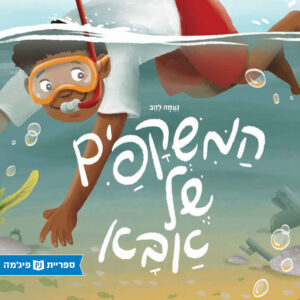 Aba’s Glasses
Aba’s Glasses 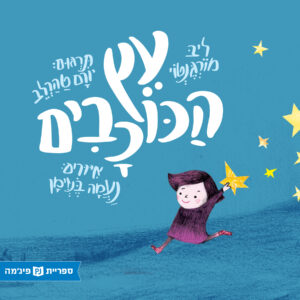 The Tree of Stars
The Tree of Stars 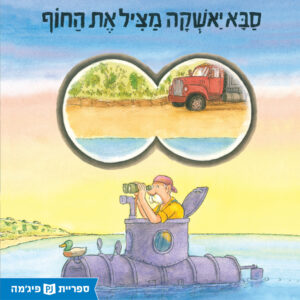 Saba Yashka Saves the Beach
Saba Yashka Saves the Beach 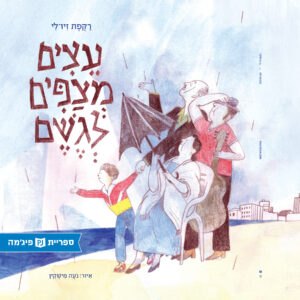 Trees Wait for Rain
Trees Wait for Rain 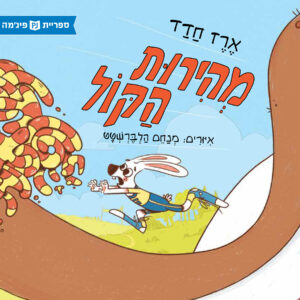 The Speed of Sound
The Speed of Sound 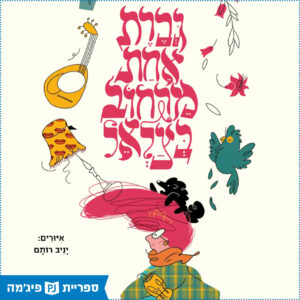 A Woman from Betzalel Street
A Woman from Betzalel Street 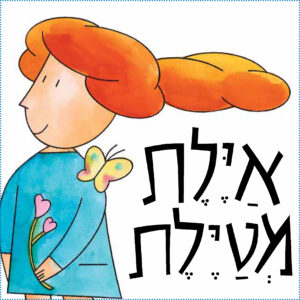 Ayelet Takes a Walk
Ayelet Takes a Walk 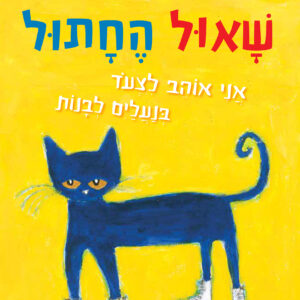 Saul the Cat
Saul the Cat 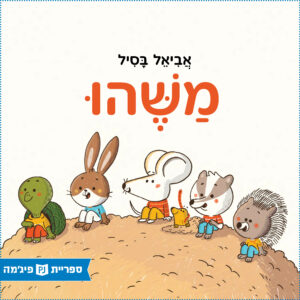 Something
Something 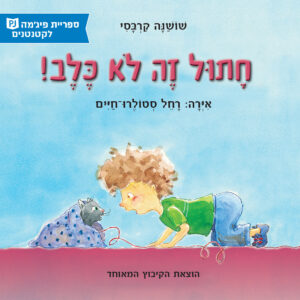 A Cat is Not a Dog!
A Cat is Not a Dog! 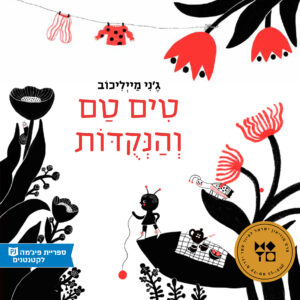 Tim Tam and the Spots
Tim Tam and the Spots 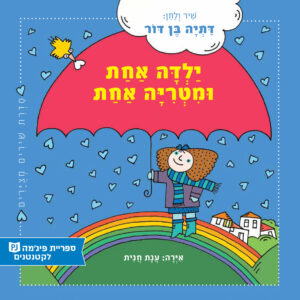 A Girl with an Umbrella
A Girl with an Umbrella 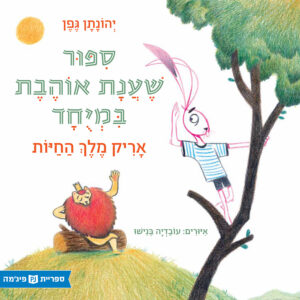 A Story that Anat Especially Likes
A Story that Anat Especially Likes 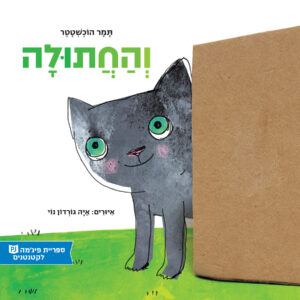 And the Cat
And the Cat 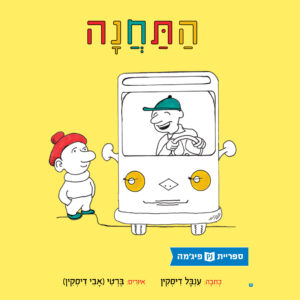 The Bus Stop
The Bus Stop 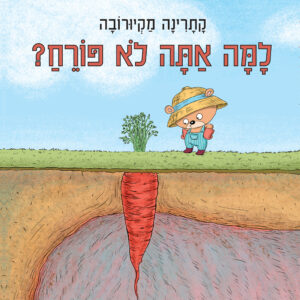 Why Don’t You Flower?
Why Don’t You Flower? 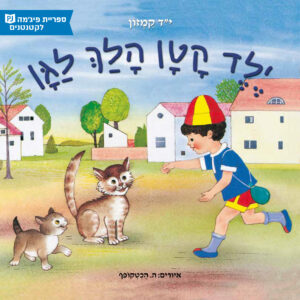 A Young Boy Went to Kindergarten
A Young Boy Went to Kindergarten 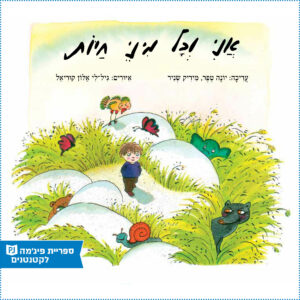 All Kinds of Animals and Me
All Kinds of Animals and Me 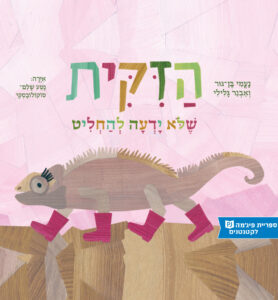 The Chameleon Who Couldn’t Decide
The Chameleon Who Couldn’t Decide 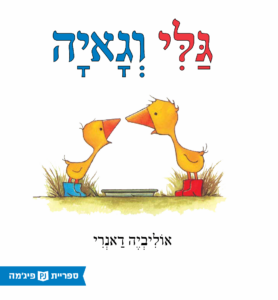 Gali & Gaya (Originally: Gossie & Gertie)
Gali & Gaya (Originally: Gossie & Gertie) 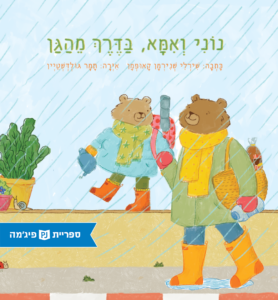 Noni and his Mom Walk Home from Kindergarten
Noni and his Mom Walk Home from Kindergarten 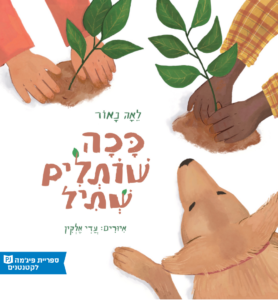 This is How We Plant a Seedling
This is How We Plant a Seedling 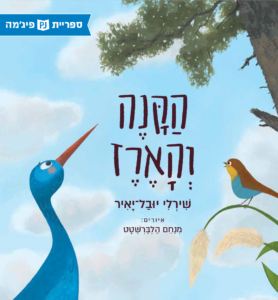 The Reed and the Cedar
The Reed and the Cedar 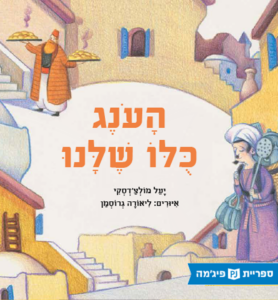 The Peddler and the Baker (Literally in Hebrew: Pleasure’s All Ours)
The Peddler and the Baker (Literally in Hebrew: Pleasure’s All Ours) 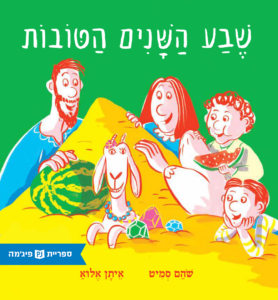 Seven Good Years
Seven Good Years 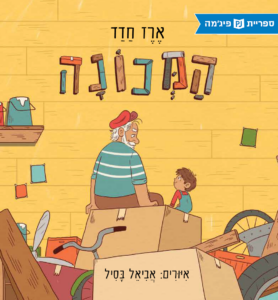 The Machine
The Machine 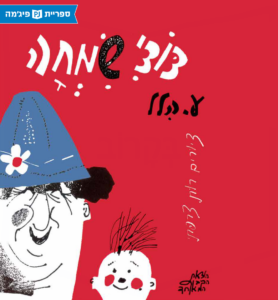 My Uncle Simha
My Uncle Simha 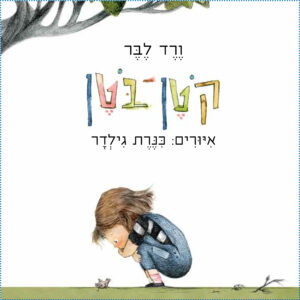 Little Peanut
Little Peanut 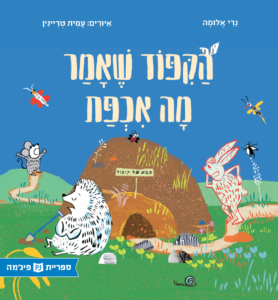 The Hedgehog Who Said: Who Cares?
The Hedgehog Who Said: Who Cares? 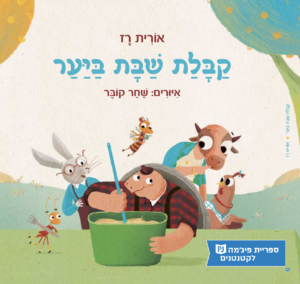 Shabbat in the Forest
Shabbat in the Forest 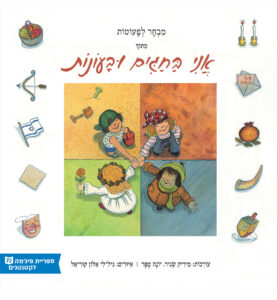 The holidays, seasons and me
The holidays, seasons and me 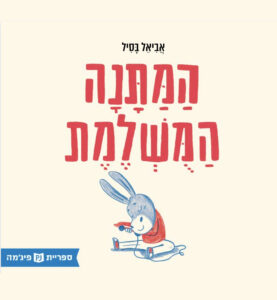 The Perfect Gift
The Perfect Gift 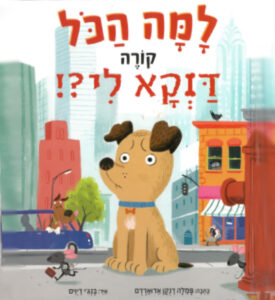 Winston was Worried
Winston was Worried 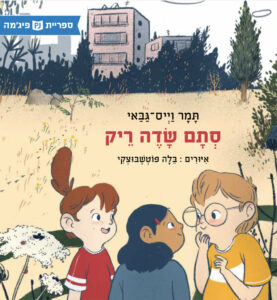 Just an Empty Field
Just an Empty Field 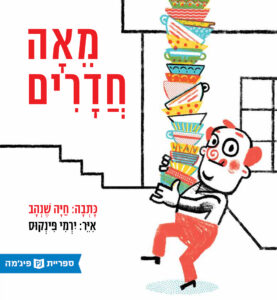 One Hundred Rooms
One Hundred Rooms 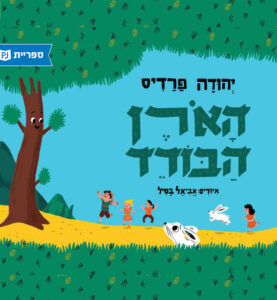 The Lonely Pine Tree
The Lonely Pine Tree 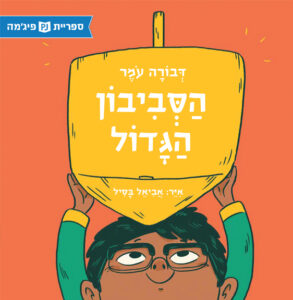 The Big Dreidel
The Big Dreidel 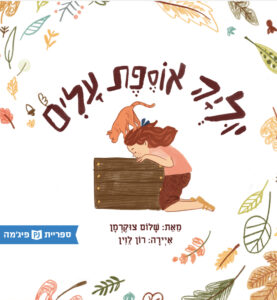 Julia and the Leaves
Julia and the Leaves 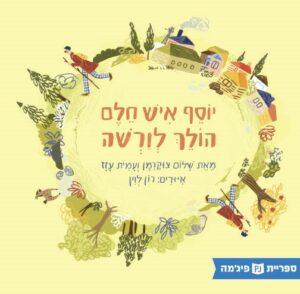 Joseph from Chełm goes to Warsaw
Joseph from Chełm goes to Warsaw 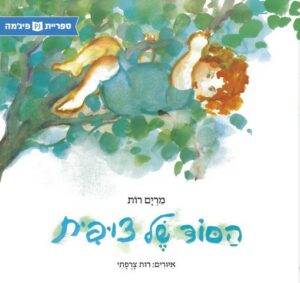 Robin’s Secret
Robin’s Secret 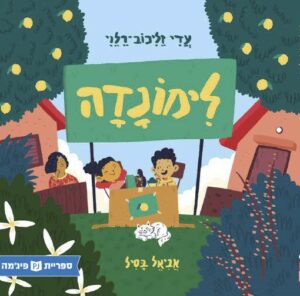 Lemonade
Lemonade 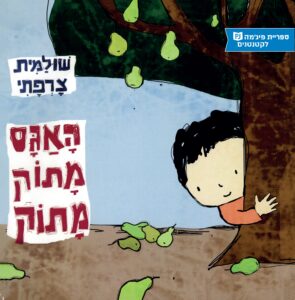 21,600The Pear is Extra Sweet
21,600The Pear is Extra Sweet 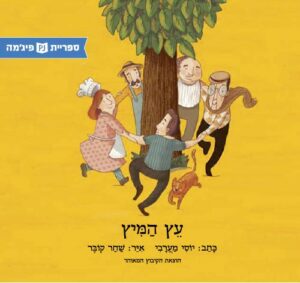 The Juice Tree
The Juice Tree 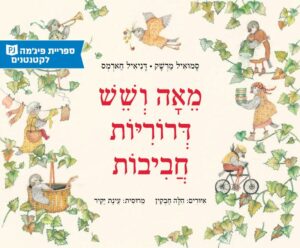 One Hundred and Six Sweet Sparrows
One Hundred and Six Sweet Sparrows 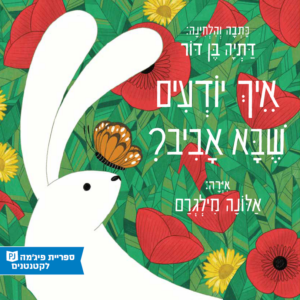 How do You Know that Spring has Come?
How do You Know that Spring has Come? 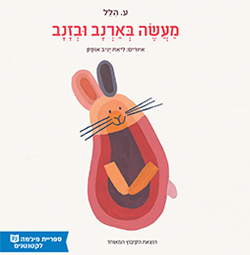 A Tale of a Rabbit and a Tail
A Tale of a Rabbit and a Tail 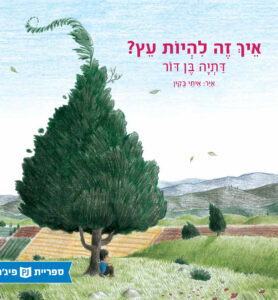 What’s it like to be a Tree?
What’s it like to be a Tree? 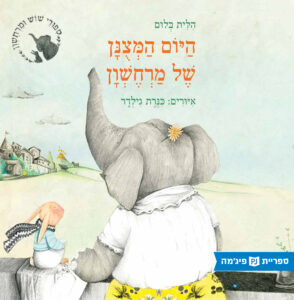 Jo and Pepper and the Big Sleep
Jo and Pepper and the Big Sleep 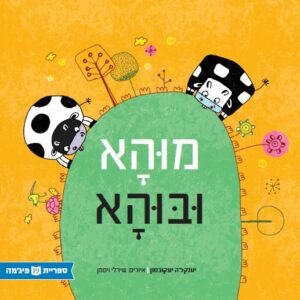 Mooha and Booha
Mooha and Booha 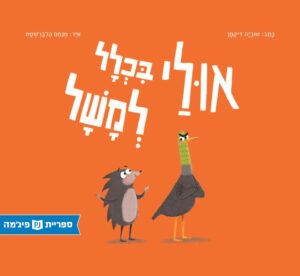 Maybe, Possibly, Perhaps
Maybe, Possibly, Perhaps 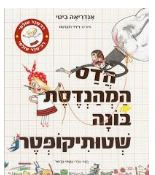 Rosie Revere, Engineer
Rosie Revere, Engineer 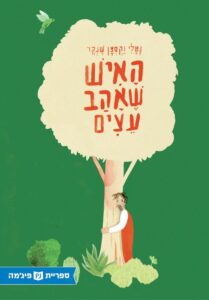 The Man who Loved Trees
The Man who Loved Trees 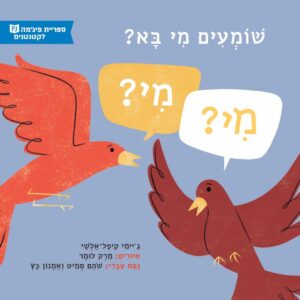 Can You Hear a Coo Coo?
Can You Hear a Coo Coo? 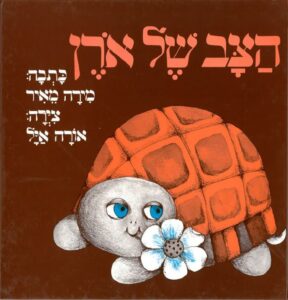 Oren’s Turtle
Oren’s Turtle 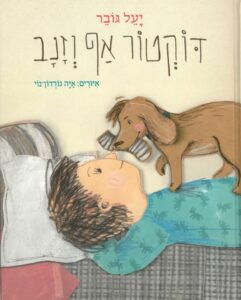 Doctor Yoyo
Doctor Yoyo 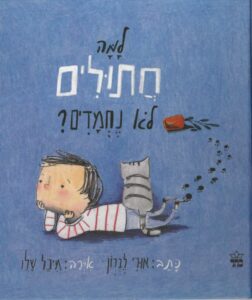 Why aren’t Cats Nice?
Why aren’t Cats Nice? 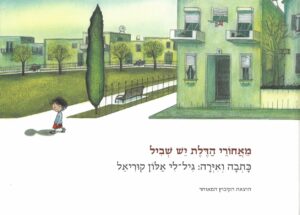 Behind the Door
Behind the Door 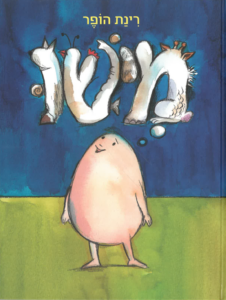 Somebody
Somebody 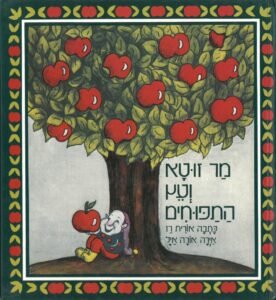 Mr. Zuta and the Apple Tree
Mr. Zuta and the Apple Tree 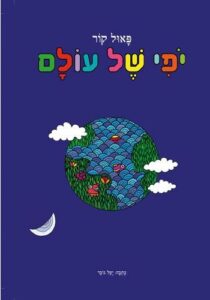 Beautiful World
Beautiful World 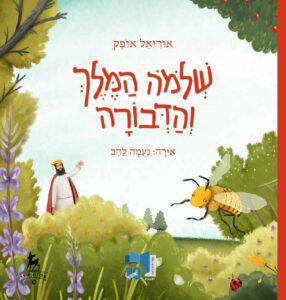 King Solomon and the Bee
King Solomon and the Bee 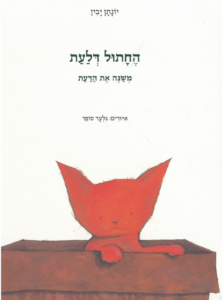 Pumpkin the Kitten
Pumpkin the Kitten 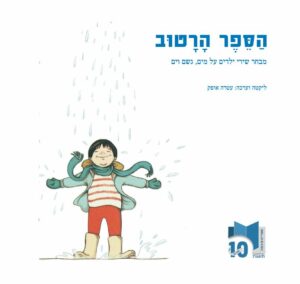 The Wet Book
The Wet Book 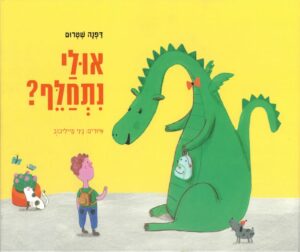 How about Changing Places?
How about Changing Places? 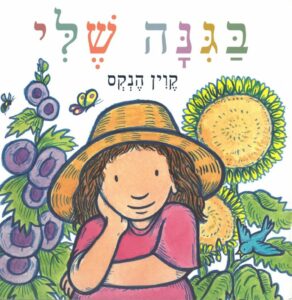 My Garden
My Garden 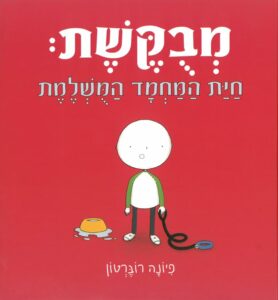 Wanted: The Perfect Pet
Wanted: The Perfect Pet 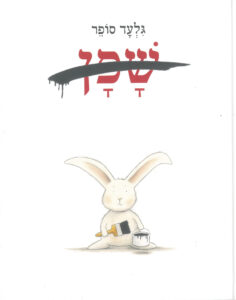 Shafan (Hyrax)
Shafan (Hyrax) 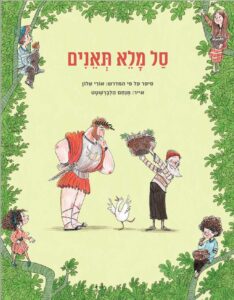 A Basket Full of Figs
A Basket Full of Figs 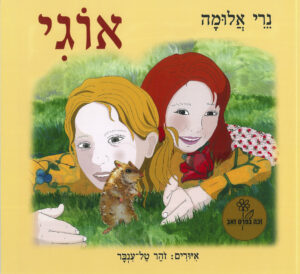 Ogi
Ogi 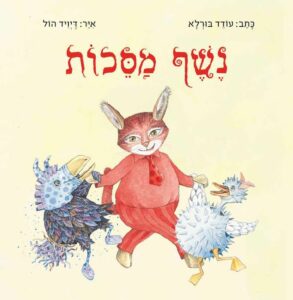 Masquerade
Masquerade 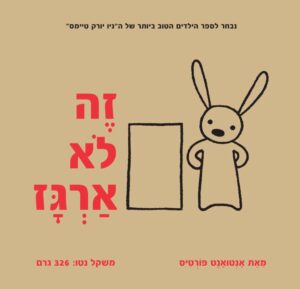 Not a Box
Not a Box 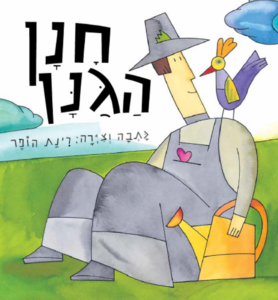 Hannan the Gardener
Hannan the Gardener 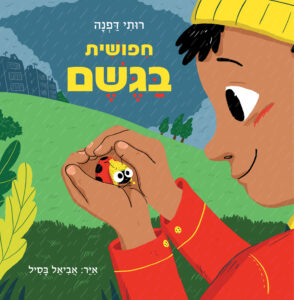 The Ladybird in the Rain
The Ladybird in the Rain 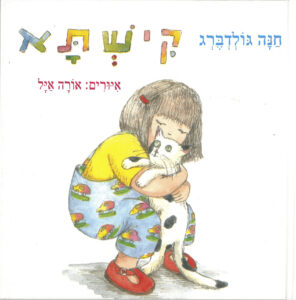 Kishta
Kishta 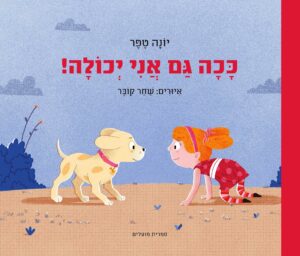 I Can do it too!
I Can do it too! 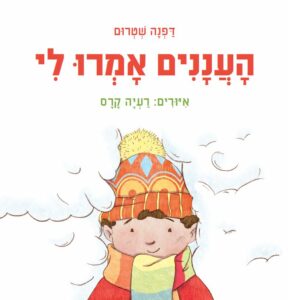 The Clouds Told Me
The Clouds Told Me ![כריכת הספר Mr. Savyon [Senecio] and Ms. Rakefet [Cyclamen]](https://www.pjisrael.org/wp-content/uploads/2017/12/מר-סביון-וגברת-רקפת-297x300.jpg) Mr. Savyon [Senecio] and Ms. Rakefet [Cyclamen]
Mr. Savyon [Senecio] and Ms. Rakefet [Cyclamen] 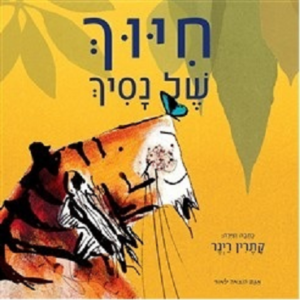 Augustus and his Smile (Hebrew title: Prince’s Smile)
Augustus and his Smile (Hebrew title: Prince’s Smile) 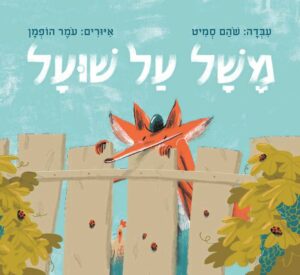 Vineyard
Vineyard 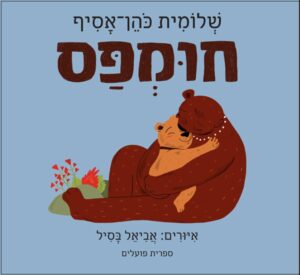 Brownstripe the Bear
Brownstripe the Bear 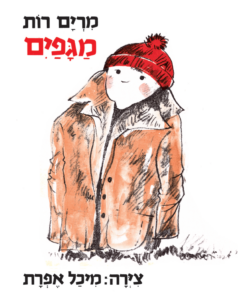 Boots
Boots 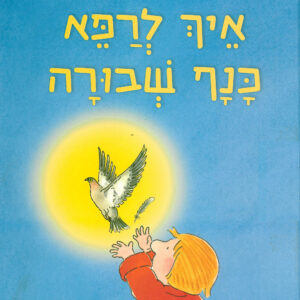 How to Heal a Broken Wing
How to Heal a Broken Wing 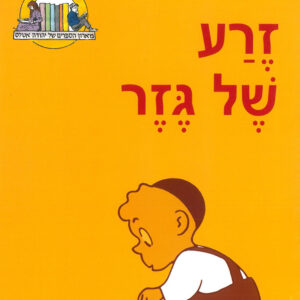 The Carrot Seed
The Carrot Seed 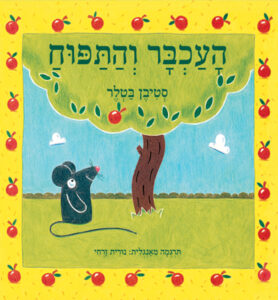 The Mouse and the Apple
The Mouse and the Apple 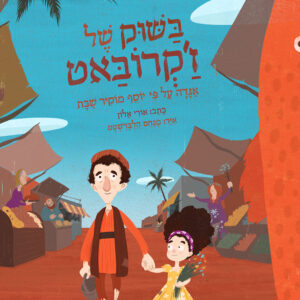 In the Market of Zhakrobat
In the Market of Zhakrobat 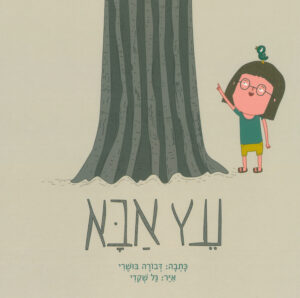 The Daddy Tree
The Daddy Tree 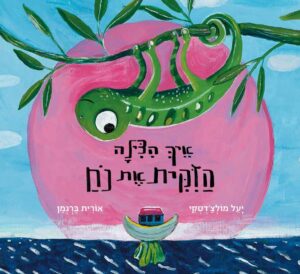 How the Chameleon Saved Noah
How the Chameleon Saved Noah 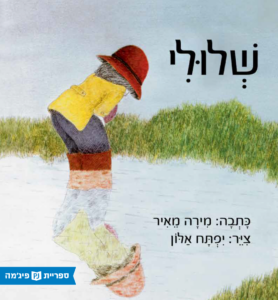 Sheluli
Sheluli 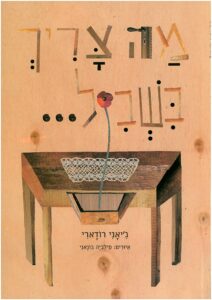 What Does It Take?
What Does It Take? 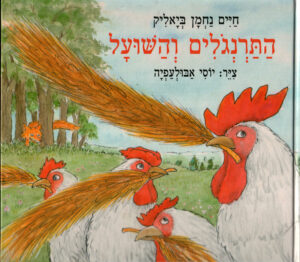 THE CHICKENS AND THE FOX
THE CHICKENS AND THE FOX 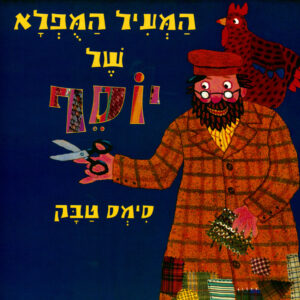 Joseph’s Wonderful Overcoat
Joseph’s Wonderful Overcoat 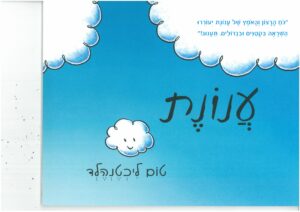 Cloudette
Cloudette 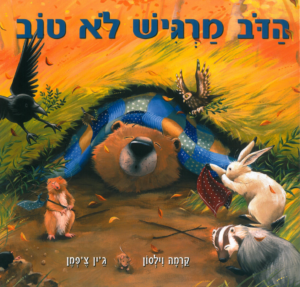 Bear Feels Sick
Bear Feels Sick 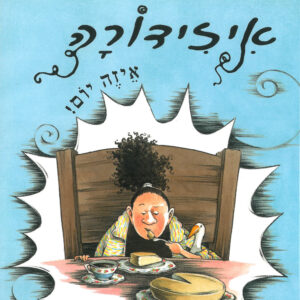 Mrs. Biddlebox In Hebrew, “Isadora, What a Day”
Mrs. Biddlebox In Hebrew, “Isadora, What a Day” 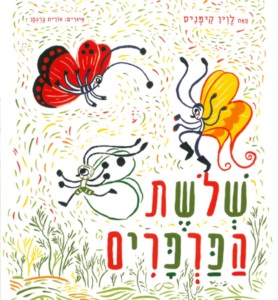 The Three Butterflies
The Three Butterflies 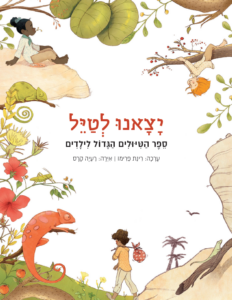 The BigBook of Trips
The BigBook of Trips 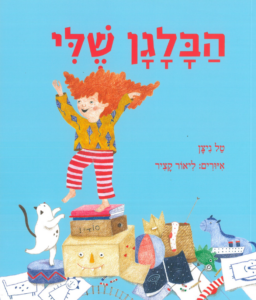 My Mess
My Mess 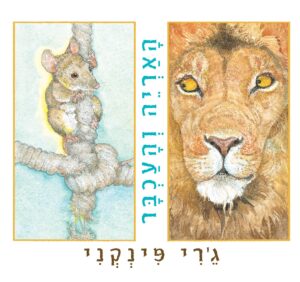 The Lion and the Mouse
The Lion and the Mouse 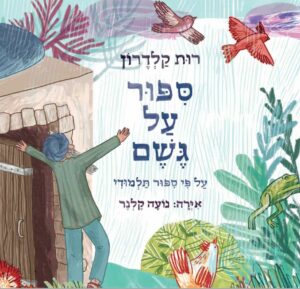 A Story about Rain
A Story about Rain 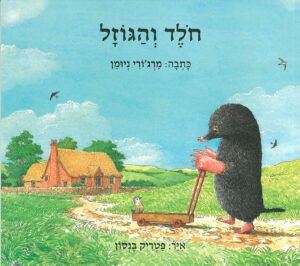 Mole and the Baby Bird
Mole and the Baby Bird 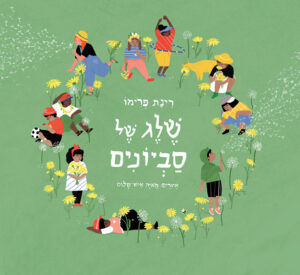 Snow of Dandelions
Snow of Dandelions 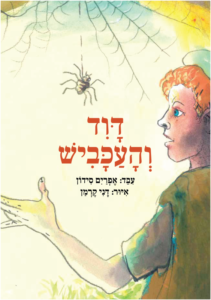 King David and the Spider
King David and the Spider 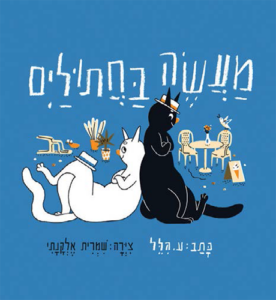 A Tale of Two Cats
A Tale of Two Cats 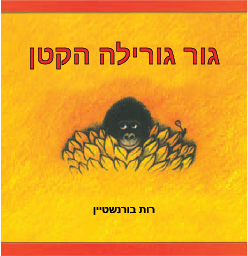 Little Gorilla
Little Gorilla 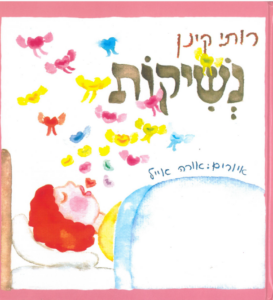 Kisses
Kisses 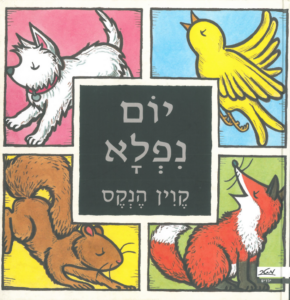 A Good Day
A Good Day 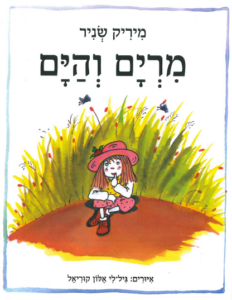 Miriam and the Sea
Miriam and the Sea 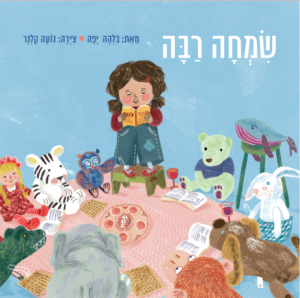 Simcha Rabba (Great Joy)
Simcha Rabba (Great Joy) 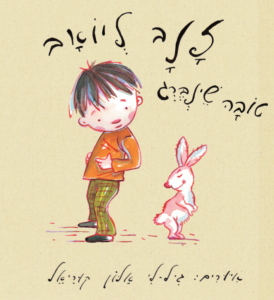 Tail for Yoav
Tail for Yoav 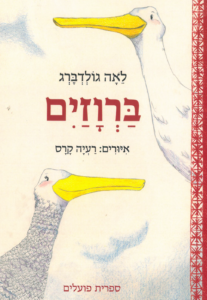 Two Ducks
Two Ducks 










